The Mysterious Crestone Crater in Colorado, US: A real meteor crater or not?
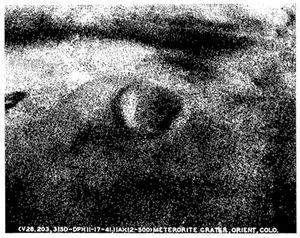
© H. H. Nininger (1941)
Aerial view of the Crestone Crater looking eastward from an altitude of about 500 feet.
Aerial view of the Crestone Crater looking eastward from an altitude of about 500 feet.
Is
the hole in the ground south of Crestone a meteor crater or not, and if
not, what is it? Well it sure looks like one, and many geologists
believe it is, but a few others say they aren't sure. It's a Crestone
mystery that's not completely solved.
Known as the "Crestone Crater" to most, this striking feature lies
inside of the Great Sand Dunes National Park, one mile from the Liberty
Gate entrance in the Baca, and 6 miles from downtown Crestone. This
crater measures 355 feet by 246 feet with a mean depth of 23 feet.
The crater was first discovered by Crestone resident V.M. King in 1934.
He and many others around the San Luis Valley had witnessed a fireball
crash in the same area back in 1892. It was first studied in 1941 by
Denver geologist Dr. H.H. Nininger, an expert in this line of research. His initial study suggested that it could be a true meteor crater, or perhaps an impact from a comet.
Two scientists who studied the crater in 1963, Ursula Marvin
and T. C Marvin, claimed otherwise, in part since they only found traces
of nickel-iron spherules, with no rock flour, impact glass or other
telltale signs of a meteorite at the site. Therefore they concluded
that it was likely not created by a meteoric impact. They felt it more
likely was of aeolian origin, or in layman's words, they felt it was
formed by the wind. However, they did not use any kind of geophysical
methods to validate their hypothesis, and geologists who have studied
the crater since have challenged this.
Richard Madole, who studied the crater in 2004, doesn't believe wind
played a role in its creation, as he notes: "The raised rim and
circular form make that seem less likely because it would be difficult
to form such a circular rim so close to the mountain front". The newest
study made at the crater, which was conducted from this past February
through May, agrees with this line of thought. It states: "The Crestone
crater has a unique geophysical signature that cannot be explained from
an aeolian process and can mostly be explained through impact events.
Conducted by students from the Colorado School of Mines, this new study
found no evidence that rules out impact origins, but it also found no
hard evidence that completely confirmed it's from a meteor, either. What
all geologists who have studied the crater agree on is that more
studies are needed. But the problem today lies in funding such studies.
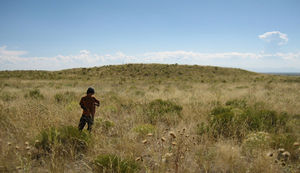
© Zach Bartley is in photo
Taken outside of the Rim: as seen approaching crater from the east, looking west
Taken outside of the Rim: as seen approaching crater from the east, looking west
Of the 178 confirmed meteor craters on Earth, most have been around
for millions of years, and there are few as small as the Crestone
Crater, with even fewer located in sand, as most are found in rock. The
facts that this crater is both small in size, and located in sand, are
the main reasons it's hard to determine its origin. The fact it is also a
relativity new find is the other reason why nothing official has been
declared one way or the other. But the 1963 study claims the crater
should have been deeper if it was impacted by a meteor. Its diameter was
found to be disproportionately large compared to the shallowness of the
crater, especially when compared to other meteor craters of comparable
diameter. But the fact this is located in sand changes everything. Anya
Reitz, a student working on her masters in geophysicists, and who took
part in the latest study, points out that windblown sand could have made
the crater's depth shallower than it once was. Reitz also points out
that sand makes for more erosion on what might be left of the meteorite
today, than had it crashed into rock. She also pointed out, along with
Madole, that the 1963 study, or any of the studies conducted so far,
have not gone down deep enough to find any possible meteorite.
So could this crater have been formed by a comet? Yes, but according to a
few geologists that's not likely. Impacts from comets on Earth are very
rare. However, the materials left behind on impact by a comet would be
more in line with what has been found to date at the Crestone Crater,
that being, comet impacts leave little behind because of their icy
makeup.
But if the Crestone Crater wasn't formed by wind, or a meteor, how did it get there?
Scientists have noted it likely was formed by one of those two things.
But states Reitz, "The anomalies we found down below make me think this
is a meteor crater". The students' faculty advisor for the study, Dr.
Jeff Andrews-Hanna, didn't feel the crater was formed by a meteor before
the study was conducted; however, since, he has officially changed his
mind and has gone down today as saying he isn't sure anymore.
Then the question that keeps coming up is what exactly did locals all
over the San Luis Valley see in the sky crashing to the ground in that
same area back in 1892? Reitz points out that witnesses noted the
fireball came from the east, and the shape of the crater indicates that
if something indeed crash-landed there, it had to have come in from an
easterly direction.
In time it will be up to the Park Service to declare if this is a
true meteor crater or not. The heads over at the Great Sand Dunes
National Park all feel that this crater is from a meteor, but they still
don't have enough proof it is yet, and without more research and
studies, finding that proof could still be years off. But because of its
small size, if the Crestone Crater is found to be an impact crater,
this will be important news, and it should lead to future research and
better understanding of smaller craters around the globe, and that alone
excites scientists.
Looking for something interesting to do while visiting Crestone? Take a
hike out to the crater and see for yourself our mysterious Crestone
crater.
Large Asteroid To Pass Between Earth And Moon
The
third near-earth asteroid of 2011 will pass between the moon and earth
later this year, NASA has confirmed. The 400-metre wide asteroid, named
2005 YU55, will pass within 0.85 lunar distances of the Earth on
November 8, 2011.
Discovered December 28, 2005 by Robert McMillan of the Spacewatch
Program near Tucson Arizona, the object is believed to be a very dark,
nearly spherical object 400 meters in diameter.
According to NASA's Neart Earth Object Program: "Although classified as a
potentially hazardous object, 2005 YU55 poses no threat of an Earth
collision over at least the next 100 years. However, this will be the
closest approach to date by an object this large that we know about in
advance and an event of this type will not happen again until 2028 when
asteroid (153814) 2001 WN5 will pass to within 0.6 lunar distances."
Earlier this week, earth experienced one of its closest encounters with
an asteroid in recent years. But as NASA indicated in the days ahead of
Monday afternoon's 'cosmic close call', the encounter was so close that
Earth's gravity sharply altered the asteroid's trajectory and prevented
the space rock from impacting the planet.
2011MD, a newly discovered asteroid passed within 12,000 kilometres
(7,500 miles) of Earth. The asteroid was only sighted for the first
time on 22 June by a robotic telescope in New Mexico, USA. The
International Astronomical Union's Minor Planet Center in Massachusetts,
USA, put out an alert Thursday.
It was daylight in the UK and Ireland (12.30 GMT) when the asteroid
passed over the southern Atlantic Ocean, near the coast of Antarctica.
The event was observable from South Africa and parts of Antarctica. It
also was visible in the hours leading up to the closest approach across
Australia, New Zealand, southern and eastern Asia, and the western
Pacific.
Some media outlets proclaimed the asteroid to be as big as New York's
Empire State Building'. In fact, 2011 MD measured about 16 feet to 35
feet.
According to Minor Planet Center's ranking charts 2011 MD's trip was the
fifth-closest recorded Asteroid event. The last asteroid to impact
earth was '2008 TC3' which was detected on 7 October 2008, just 19
hours before it burned up in the atmosphere over northern Sudan.
Earlier this month (2 June), a 10-metre wide asteroid passed between the earth and moon.
Asteroid 2009 BD, which was first observed on 16 January 2009 passed
approximately within 0.9 lunar distances (the distance between Earth and
the Moon) of earth. Astronomers believe the rock is a rare "co-orbital
asteroid" which follows the orbit of the Earth, not receding more than
0.1 AU (15 million km) away.
Two asteroids, several meters in diameter and in unrelated orbits,
passed within the moon's distance of Earth, September 8 2010. In April
2010 an asteroid roughly as long as a tennis court zoomed past Earth at
about the distance of the moon. The space rock to pass at or within
lunar distance previous to this was 2009 JL2, an asteroid about 17 to 37
meters across, in May 2009.
There is a roughly 50 percent chance of a 30-meter-plus asteroid
striking Earth each century, according to Clark Chapman, a space
scientist at the Southwest Research Institute in Boulder, Colorado, USA.
Meteorite strike? Russia can take it!
If
a large asteroid falls on the earth then the fallout will be huge and
life as we know if comes to a choking, flaming end. But if it's a small
one then Russia can take it.
That's more than can be said for Europe and North America, whose people can kiss the world goodbye if anything lands on them.
The reason is not that Russians are hardier than everyone else but that
with its expanses of open space, covering one fifth of the world's land
surface, Russia could take the strain.
A near miss
An asteroid the size of a truck skimmed past Earth four weeks ago,
coming closer to us than the moon ever has. The 7-meter lump of
celestial rock, named 2009 BD, came within 346,000 kilometers of Earth
at around 9:51 pm Moscow time The moon's average distance from us is
about 385,000 km.
So it, was relatively speaking, by a gnat's whisker that a calamity approaching the Hiroshima bomb bypassed humanity.
But so long as the heavenly bombshell was that small Russia
would be alright, according to the NEOimpactor (from NASA's "NEO" or
Near Earth Object program).
The ten countries that would be the most affected are China, Indonesia,
India, Japan, the United States, the Philippines, Italy, the United
Kingdom, Brazil and Nigeria, because of their dense populations.
Only a century ago
"The consequences for human populations and infrastructure as a result
of an impact are enormous," Nick Bailey, one of the NEOimpactor
software's authors, told the University of Southampton, as reported by
the Daily Galaxy.
"Nearly one hundred years ago [in 1908, the remote Krasnoyarsk] region
near the Tunguska River witnessed the largest asteroid impact event in
living memory when a relatively small object (approximately 50 meters in
diameter) exploded in mid-air.
"While it only flattened unpopulated forest, had it exploded over London
it could have devastated everything within the M25," he said.
It took scientists until 1927 before they reached the site of the blast,
and the devastation they found two decades later is pictured above.
Running out of time
In 2028, the asteroid 1997XF11 will come extremely close to Earth but
should miss the planet. If something were to change and it did hit
Earth, what you would have is a mile-wide asteroid striking the planet's
surface at about 50,000 mph.
An asteroid that big traveling at that speed has the energy roughly
equal to a 1 million megaton bomb, engineer Marshall Brain wrote for Discovery Company How Stuff Works.
An asteroid on this scale is potentially 10 million times more powerful than the Hiroshima bomb.
The amount of dust and debris thrown up into the atmosphere would block
out the sun and cause most living things on the planet to perish. If an
asteroid that big were to land in the ocean, it would cause massive
tidal waves hundreds of feet high that would scrape everything off the
coastlines where they made landfall.
While the timescales may seem colossal compared with a human life
lasting for a few decades, the craters dotting the surface of the Moon
and the inner planets show that in galactic terms these crashes are
frequent events.
They happen more or less every 100 million years and the last one was 70
million years ago, believed to have been responsible for wiping out the
dinosaurs.
Comment: Actually, the possibility of a strike
is much more imminent. Perhaps not by the "killer asteroid", but one
doesn't need to be knocked over by the a sledgehammer, when series of
"undetected" darts can do the job very well. The stony "drops" have been
falling on our heads for quite some time now, and we wonder if one of
them is about to provide us with the last wake-up call.
US - July 3, 1861: The Great Comet - what does it portend?
"The
Comet. Mr. Editor: -- Did you see the comet Monday night? I was
indebted for the pleasure to an excellent friend, who took the trouble
to call and awaken me. I certainly was never more astonished. All
similar visitors to our system have either been foretold, or discovered
by astronomers when not visible to the naked eye. Their approach has
been gradual, and their advent and progress duly chronicled by the
newspapers. But this has come like a thief in the night, unannounced - -
undiscovered -- until, with a splendor far beyond any of its
predecessors, it blazes in our firmament ... The tail reached the
zenith, inclining a little to the West. The body seemed three or four
times as large as that of any other comet I ever saw. My friend says
when it first caught his eye, without referring to the points of the
compass, he took it for the moon ..."
Letter to the editor, The Daily Virginian
"The Comet ... What does it portend now? Is it one of those
'great signs that shall be seen in the heavens at the time when 'wars
and rumors of wars' shall fill the earth? Is it part of the grand
paraphernalia in which the heavens are to be dressed when betokening the
approach of that 'great and notable day' ... We should not be guided by
the dim, uncertain light of supersititon; but there is much in our
surroundings eminently suggestive. The times are pregnant with great
events that may soon be developed. ... Events now rapidly tending
towards their full development, may mark this as one of the grandest and
most awful epochs in the history of the world. Who can tell what lies
before us?"
Editorial, The Daily Virginian
(The Great Comet of 1861 passed closest to Earth on June 30, 1861,
according to cometography.com. The comet itself appeared in the skies of
North America before the news of its May discovery in the Southern
Hemisphere reached here. The vivid comet had a long tail and was one of
eight "Great Comets" of the 19th century.)
Astronomers around the world breathed a sigh of relief last Monday
night when an asteroid passed within 12,000 kilometres of Australia,
closer than communication satellites.
First observed by a dedicated telescopic asteroid tracker in the US on
22 June, the object was then observed by French astronomer Professor
Klotz and PhD student Michael Todd, who remotely programmed it into the
schedule for the Zadko Telescope at the University of Western Australia.
Director of the telescope, Associate Professor David Coward, said the
asteroid - officially known as Near Earth Asteroid 2011MD - was
identified as a tumbling, elongated 4-12 metre rock during a 40-minutes
observation by Zadko over Australian skies. The Zadko telescope
observations were the first to determine that the rock was rotating with
a period of about 11 minutes.
"NASA said asteroids of the size of 2011MD come this close to Earth on
average once every six years so it's a relatively rare event," Coward
said. "2011MD was within the geosynchronous satellite belt, orbiting
with our communications satellites and it could do a lot of damage if it
collided with one."
A visiting astronomer at the university, Professor Michael Boer
from the Observatoire de Haute Provence in France, said: "If it were to
enter the Earth's atmosphere there would be a big bang and it would
probably explode. An asteroid that exploded over Russia in 1908
flattened a forest.
"A bigger space rock - say one of 100 metres - could destroy cities so
it's important that we track them and that we pick them up early so we
can have a worldwide coordinated warning system if necessary. We don't
want to detect them 24 hours before they get close. There are more space
rocks up there, we've just have not found them yet.
Boer said the Zadko played an important role in monitoring the skies
above Western Australia and was part of a worldwide programme.
Last week the Earth came close to being hit by a chunk of cosmic debris packing the punch of a Hiroshima-type atomic bomb.
The house-sized asteroid 2011 MN shot past the Earth at more than
25,000kph last Monday, coming closer than some communications satellites
before flying off back into the void of space.
So why were we not warned? One reason was that although it was a
close-run thing, astronomers had pinned down the path of 2011 MN well
enough to be pretty confident it would miss us.
Another was that even if it had struck, it would have lost most of its
energy as it entered our atmosphere, most likely burning up to give a
brief but impressive shower of "shooting stars".
Even so, the incident serves as a timely reminder that the
cosmos can still spring nasty surprises on us - and especially at this
time of the year. At the end of June our planet cuts across a part of
space littered with debris that some astronomers believe has caused
devastating impacts on Earth during recorded history.
Most of this debris is nothing more than specks of ice and dust, some of which enters our atmosphere and burns up in a flash.
But every so often the Earth encounters something much larger lurking in
the debris trail: tower block-sized chunks of a comet that entered our
solar system thousands of years ago.
Travelling at more than 100,000kph, these are big enough to survive
entry through the atmosphere, and they could strike with the explosive
violence of dozens of H-bombs.
This may sound like another of those terrifying yet incredibly rare events scientists seem so keen to scare us with these days.
But this is no once-in-a-million-years scenario. There is now impressive
evidence that just such a cosmic impact happened barely a century ago.
Known as the Tunguska Event, it took place in the morning of June 30,
1908, over a remote part of Siberia. Eyewitnesses reported seeing a
colossal fireball and trail of black smoke crossing the morning sky;
some even claimed to feel the heat on their bodies. As it approached the
ground, an explosion triggered a blast-wave that knocked people off
their feet. A huge forest fire then broke out, sending vast plumes of
smoke up into the air.
It took scientists almost 20 years to reach the remote site of the
incident and begin gathering evidence. Leonid Kulik, a Soviet
mineralogist at the Soviet Academy of Sciences in St Petersburg,
confirmed the reports that something catastrophic had taken place.
He found a scene of complete devastation as far as the eye could see,
with charred remnants of trees lying like matchsticks, all pointing
outward from an epicentre around 75 kilometres north of the Tunguska
river.
Kulik was convinced he was looking at the effects of a giant meteor
impact, and set about looking for fragments of the cosmic visitor. Yet
he failed to find anything: no chunks of meteor fragments, not even an
impact crater.
Inevitably, this prompted more speculative explanations, ranging from
the impact of a small black hole with the Earth to some form of UFO
incident.
Among astronomers, however, there is now little doubt that Kulik was
right, and the cause was a 50m-diameter meteor - which left no debris
because it broke apart under atmospheric stresses about 10km above the
ground.
Many scientists are content to regard the Tunguska Event as just one of
those freakish phenomena that can be consigned to history. But some
astronomers have pointed to a number of curious coincidences about the
timing of the event.
In 1975, seismometers placed on the Moon by the Apollo missions detected
a colossal meteor storm blasting the moon over five days - around the
end of June.
Shortly afterwards, the American meteorite expert Jack Hartung pointed
out that a medieval report of what appeared to be a huge explosion on
the Moon could be dated to the end of June in the year 1178.
Perhaps most telling of all was the discovery in 1947 of a trail of
cosmic debris which the Earth cuts across every year - around the end of
June.
The impact risks posed by this so-called Taurid meteor stream were first
highlighted almost 30 years ago by two British astronomers, Dr Victor
Clube and Dr Bill Napier.
At the time, the scientific community was struggling to accept claims
that the extinction of the dinosaurs was linked to a cosmic impact near
today's Gulf of Mexico around 65 million years ago. As a result, the
authors' claim of a threat to present-day Earth fell largely on deaf
ears.
Now catastrophic meteor impacts no longer seem so outlandish, and
mounting evidence backs the idea that a giant comet entered our solar
system 25,000 years ago, leaving debris in the Taurid stream that still
threatens the Earth.
Last year, the Royal Astronomical Society published a study by Dr Napier
linking the Taurid meteor stream with evidence for cosmic impacts
around 12,900 years ago, ranging from massive fires across North America
to the extinction of many animal species in the region.
Despite this, efforts to hunt down the giant disintegrating comet remain
low-key. In the mid-1990s, the US space agency Nasa set up Spaceguard,
an international network of telescopes designed to discover and track
potential Earth-impacting objects.
But astronomers admit they do not have the technology needed to detect
more than a few per cent of any Tunguska-like objects that might be out
there.
Until such technology becomes available, the location of the giant comet
that stalks the Earth will remain a mystery - one that we may regret
failing to solve one June day in the not-too-distant future.
Robert Matthews is visiting reader in science at Aston University, Birmingham, England
Hazards of Occupation? Meteorite hunter: My two months in an Omani jail
Michael
Farmer tells the tale of his quest for extraterrestrial geology and how
it landed him in prison, and explains why he eats bits of the moon and
Mars.
Why did you head to Oman in the first place?
On 31 December last year I went on my 20th meteorite hunting expedition
in Oman with my fellow hunter Robert Ward. I have studied the law there
since the arrest of Russian and American hunters back in 2005 and I
understand the practice to be legal.
How did your meteorite hunting trip go?
I found 35 meteorites, including three more pieces of the Dhofar 1180
Lunar, which I'd originally found in 2005, and other nice things. On the
last day we headed towards Dubai. At 1pm on 13 January we arrived at a
roadblock in the town of Adam. There was nothing out of the ordinary,
until the police rushed my car with M16 rifles. They were nice and did
not seem to know why we were being arrested but they forced us out of
our cars and ripped them apart, finding the meteorites. We were taken to
the police station and interrogated for 10 hours. They had intelligence
that we were coming. I think I know who had told them.
After the arrest where did the police take you?
We were driven to Muscat, the capital of Oman, in shackles. We arrived
at midnight and were taken to an interrogation centre in the Qurum
district of the city. There we were stripped, put into separate rooms,
about 9 by 9 by 12 feet, with a small pad on the floor and two blankets.
The rooms were horribly filthy, crawling with roaches. There were
things on the floors and walls which I decline to describe. A small
light was on 24/7 so you never knew the time of day. We heard people
being beaten, crying, screaming and being dragged around.
How did you get help?
Two days after our arrest I was interrogated, forced to sign a statement
admitting guilt, then driven to a prosecutor's office, arriving at
midnight on 15 January. I begged the prosecutor for a call and he
refused, then thankfully after he sent me out to a waiting room, another
person quietly handed me a cellphone, so I called my wife. It took a
week for the American embassy to find us. Even so, we went to trial on 6
Feb, a 15-minute joke, as it was in Arabic. The judge asked one
question and then sentenced us to six months in prison and a $250 fine
for illegal mining operations.
After sentencing where were you incarcerated?
We were sent to the Sumail central prison, which was clean and new. But
we were the only two westerners in a prison of thousands. We nearly
starved to death. Another prisoner carved me a spoon out of a toilet
cleaner chemical container. I still have it. At one point, special
forces were brought in as some of the other cell blocks rioted and all
hell broke loose, as part of wider protests in Oman. That's when things
went really downhill and they surrounded the prison with tanks. We were
scared for our lives.
In March you appealed against your conviction for
illegal mining and violating cultural heritage laws. How did you make
your case?
I told the court that a meteorite is not an artefact, and when asked how
old it was, I said it was unknown. Robert also spoke at length, then
our lawyer fought very hard for an hour or so over every aspect of Omani
law. The judges left, came back 5 minutes later, looked at Robert and I
and said in Arabic "Hallas", which means "finished", and then in
perfect English, "You are released from prison". By then I had served
two months of my sentence and lost nearly 40 pounds - I was offered less
to eat than my pet cat eats in a day. I had nightmares for more than a
month afterwards.
Is meteorite hunting illegal in Oman?
I have collected nearly a thousand meteorites from there, all legally in
my view. If they don't like it, well then I say change the law.
Will you ever go back to Oman?
We were deported and can never return there. I have been enough times anyway. I do plan to return to North Africa.
Do you regret your last trip there?
No. We have had adventures there that money can't buy. Those of you who
have never taken a risk cannot understand that those of us who gather
these stones that fill museums and collections around the world
knowingly risk life and limb. Those who are unwilling to take a risk
usually gain little.
Have you ever been arrested anywhere else in the world?
I have been arrested in northern Arizona, at Meteor Crater. But I was on
state land, with a permit, so the court threw out the case. I was
released and all my meteorites were returned.
Three years ago we barely got out of Peru. We were there to study a big
stone meteorite fall that made an impact crater 14 metres wide, near the
village of Carancas. Models predicted that such a meteorite should have
exploded into thousands of pieces and not made it to the ground in a
large enough piece. I was called by scientists who wanted to be sure it
really was a stony meteorite. I was sure, since I dug it out of the mud!
Afterwards, when I tried to leave Peru, the border police took us back
to the crater and demanded thousands of dollars. When we refused, they
threatened to put us in prison. We jumped in a taxi and drove to another
border crossing and escaped. When we arrived in Bolivia and checked our
email, we had one from the US embassy saying the local police had
already reported our arrest.
I understand you have an unusual habit. What is it?
I've eaten a small piece of every moon rock and Mars rock that I have
purchased or found. After all, not many people can say they have eaten a
piece of the moon. And I know for a fact that numerous scientists have
done the same.
Do you have a favourite meteorite?
My favourite would have to be the Springwater pallasite,
a stony-iron meteorite which was first found in Saskatchewan, Canada,
in 1931. My partner and I researched it for months, then did several
trips scouting the location and finally rediscovered the area where the
meteor had hit the ground, which had been forgotten. We have been
methodically searching there for three years now and have recovered many
pieces, including the 52-kilogram chunk which was sold to the Royal
Ontario Museum last year. I have put so much time and effort into that
one.
Do you plan to go meteorite hunting again and, if so, where?
I am trying to keep a lower profile these days - I'm a little skittish
after Oman. I have just returned from collecting in Canada. The most
danger we were in was getting stuck in the mud. In the summer I plan to
go to the Arctic in Sweden, which is nice and safe. I am lucky. How many
people get to travel every part of the world to do their job?
Profile
Michael Farmer
became interested in meteorites 15 years ago when he visited the Tucson
Gem and Mineral Show and bought his first one. He has made more than 50
trips to Africa and earned 3 million frequent flier miles on one
airline alone. He sourced the Martian meteorite NWA 2975Movie Camera, a piece of which is being awarded to a lucky New Scientist competition winner this week
Giant Fireball Filmed In Mexico
With a title that reads "UFO or Meteorite", it's easy to see how alien and UFO rumors begin. Posted on YouTube is a video that was shot in Cuernavaca, Mexico, on June 29th, 2001.
The video is by far one of the clearest and most beautiful filming of a
meteorite falling towards earth. With such long trailing tails of fire,
you really can't help but imagine this thing bring from a different
planet.
Fireball July 7, 2011, Georgia, USA
Caught it! Someone says it's airplane, well then the plane is from outter space then... I've never seen such plane! Gosh!
Meteor / Fireball Over Georgia July 4, 2011 - Red Barn Observatory
Georgia meteor / fireball entering the atmosphere at 12:17:45 EST
(04:17:43 UTC) on July, 4 2011. Approximate magitude -6.5 to -7.5.
Recorded with a Sandia Laboratories Fireball Camera - located on site of
the Red Barn Observatory MPC-H68 in Ty Ty, Georgia. Steve E. Farmer Jr.
Some people in the Gainesville area reported hearing a mysterious loud noise - like an explosion - Thursday morning.
AccessNorthGa.com received calls between 10:00 and 11:00, the first
about 10:40 from the McEver Road/Browns Bridge Road area. The caller
said it shook her house and wondered if it might have been a sonic boom,
caused by a jet breaking the sound barrier.
A second caller, a few minutes later, said he was sitting by his
pool on Mountain View Road, which is off McEver, and saw a "streak
across the sky," followed by the loud noise, leading to some speculation
that it was a sonic boom caused by a meteor entering the earth's
atmosphere.
There were also reports Friday morning from people who say they heard it in Monroe and in Lumpkin County.
Lt. Col. James Wilson, a spokesman for Dobbins Air Reserve Base, said
the noise was probably not caused by a plane approaching or leaving the
base, which is in Marietta. He said the Dobbins flight schedule does not
indicate any aircraft would have been passing through the area at that
time.
Base officials say they are still looking into the matter.
(The Associated Press contributed to this story.)
As
President Barack Obama jump-starts his re-election campaign and
declared or potential Republican candidates like Michele Bachmann, Tim
Pawlenty, Jon Huntsman, Mitt Romney and Rick Perry test-fly various
strategies, it's a sure bet that not one of them will be breathlessly
warning of an always pending and incalculably lethal threat to our
troubled planet.
Too bad. They should be.
This city, region, nation, or even planet-killing threat -
chuckling and shakes of the head anticipated - are the all-but
invisible asteroids which whiz by earth on a fairly regular basis.
For instance, asteroid 2011 MD. Heard of it? Well, on June 27, this asteroid - which was not discovered until June 22 - just missed the only home we have in the universe by a miniscule 7,500 miles.
To astronomers, that's a distance so close that the objects may as well be touching.
Of course, instantly NASA astronomers basically said, "Nothing to see here. Move on. There is no chance 2011 MD will hit Earth."
Even if they had been wrong and the asteroid did enter our atmosphere, they said it "likely wouldn't reach the surface."
By their own admission, NASA initially got the calculations on asteroid
2011 MD's closet approach to Earth wrong, so "likely" is not always that
comforting.
What if they had been even more wrong and it was a certainty that it was about to strike earth?
What if, instead of the approximately 100 feet across, it had been 500
or 1,000 feet across? With five days notice or less, what could we do to
avert a collision that would have the potential to wreck havoc on
humanity?
Nothing. Absolutely nothing.
Laugh, if you will. File this incident and remarkably close call in with
the reports of UFOs over the swamp and Sasquatch in the neighbor's
backyard.
But you do so at all of our peril.
In 1908, an asteroid - much smaller than originally believed -
exploded over Siberia and flattened more than 800 square miles of
forest, killing everything in its path.
The truth is that the vast majority of politicians in our country -
Republican or Democrat - are loath to discuss this subject out of fear
of being labeled eccentric or because they have (rightfully) determined
that it's not considered tangible and is not a vote-getter.
Fine. Except I would argue that asteroid 2011 MD just demonstrated that
if leaders such as President Obama, Rick Perry, Mitt Romney, Michele
Bachmann and others are not talking about the horrific and unimaginable
consequences of an asteroid strike, they are in dereliction of duty.
There will be no second chances, no do-overs, and no soaring rhetoric to reverse the devastation or even extinction.
Knowing that to be the absolute truth, shouldn't those politicians who
hold our fate in their hands at least give this subject a bit more
thought?
As our elected officials continue to throw billions of dollars around
like they were dimes, shouldn't they think about investing more of that
money into asteroid detection and collision prevention?
Diverting or destroying an Earth-killing asteroid can only really be accomplished from a space-based platform.
A platform that does not exist.
Next, does this latest cosmic scare dictate the need for the governments
of the world to come together to formulate a plan to permanently get a
sampling of humankind off the planet and into the solar system as a way
of preserving the species?
Leaving aside destruction by an asteroid, human beings tend to be fairly
fragile and don't react well to nuclear weapons, terrorism, natural
disasters or unforeseen plagues.
Isn't it time we covered that bet?
While I go back to scanning the skies for ET and leaving a plate of food
out for Bigfoot, I really do hope President Obama and those who seek to
replace him, give this subject the attention it deserves... before it's
too late.
Douglas MacKinnon is a former White House and Pentagon official and a long-time consultant on space.
Probe Nears Target: Asteroid the Size of US State of Arizona
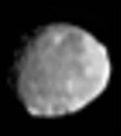
© NASA / JPL-Caltech / UCLA / MPS / DLR / PSI
NASA's Dawn
spacecraft obtained this image on June 20 on its approach to the
protoplanet Vesta, the second-most-massive object in the main asteroid
belt.
NASA's Dawn
spacecraft obtained this image on June 20 on its approach to the
protoplanet Vesta, the second-most-massive object in the main asteroid
belt.
Dawn, first spaceship to visit Vesta, will enter into orbit next week for year's study
A NASA spacecraft is just 11 days away from a historic rendezvous with an asteroid the size of Arizona.
NASA's Dawn probe
should enter into orbit around Vesta on July 16, becoming the first
spacecraft to visit the 330-mile-wide space rock - the second-largest
object in the main asteroid belt between Mars and Jupiter. Dawn
is expected to spend a year studying the space rock from above, marking
the first time a spacecraft has ever made an extended visit to a large
asteroid.
Scientists hope Dawn's mission will help them learn
about the early days of the solar system and the processes that formed
and shaped rocky planets like Earth and Mars.
"Bodies like Vesta are building blocks," Dawn principal
investigator Christopher Russell of UCLA told reporters in a recent
briefing. "So we're going back and doing some sort of investigation into
our roots, the roots of the solar system."
A long journey
Dawn is now in the home stretch of a nearly four-year cosmic
chase. The probe launched in September 2007 and has logged about 1.7
billion miles during its travels. As of Friday, Dawn had closed to
within 53,400 miles of Vesta, researchers said.
Dawn will be just 9,900 miles from Vesta when the space rock's gravity captures the probe on July 16. At that point, Dawn and Vesta will both be about 117 million miles from Earth.
The capture shouldn't be a dramatic, nail-biting affair punctuated by last-minute thruster burns. Dawn
has been using its low-thrust ion propulsion system to close in on
Vesta slowly but surely, and it should slide nicely into orbit on July
16.
The spacecraft will begin its science operations in early August, researchers said.
Studying a protoplanet
Vesta is so large that many scientists classify it as a protoplanet. The
object was well on its way to becoming a full-fledged rocky planet long
ago, scientists said, but circumstances intervened.
"The formation of Jupiter started stirring up that region of the
asteroid belt and preventing materials from coming together any longer,"
Russell said.
So Vesta is a sort of time capsule, preserving some record of how the solar system came together 4.5 billion years ago.
"As we explore Vesta, we take a virtual journey back in time to the beginning of the solar system," said Carol Raymond, Dawn deputy principal investigator at NASA's Jet Propulsion Laboratory (JPL) in Pasadena, Calif.
During its year at Vesta, Dawn will map the giant asteroid's
cratered surface fully, study its composition and investigate its
geological history. It will do this from several different orbits,
ranging from 1,700 miles above Vesta to just 120 miles, researchers
said.
On to the next big thing
Dawn should wrap up its science work at Vesta in July 2012. But
at that point, the probe's mission will only be half-finished. It will
then jet off for another asteroid encounter, this time with the dwarf
planet Ceres - the largest object in the asteroid belt.
Dawn should arrive at the 605-mile-wide Ceres in early 2015.
The spacecraft's observations will allow scientists to compare the two
giant bodies, which have been shaped by different forces, researchers
said.
"The Dawn mission is unique in that we're going to be the first
mission to rendezvous with not just one body, but two solar system
bodies," said Robert Mase, Dawn project manager at JPL. "These are two of the last unexplored worlds in our inner solar system."
Source: Space.com
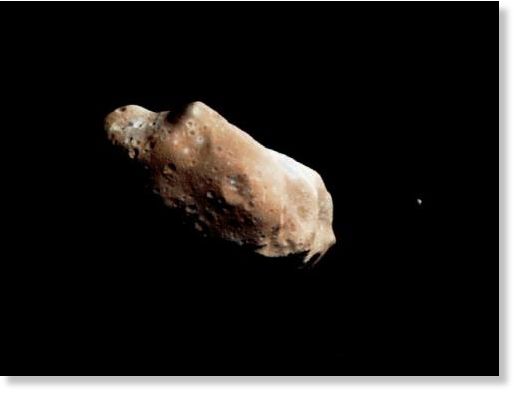
© NASA
NASA's
Galileo spacecraft took this image of asteroid Ida and its moon Dactyl
in 1994. The image was the first conclusive evidence that natural
satellites of asteroids exist. We still don't know whether Vesta has a
moon
NASA's
Galileo spacecraft took this image of asteroid Ida and its moon Dactyl
in 1994. The image was the first conclusive evidence that natural
satellites of asteroids exist. We still don't know whether Vesta has a
moon
NASA's Dawn spacecraft is closing in on
Vesta, and from now until the ion-powered spacecraft goes into orbit in
mid-July, every picture of the giant asteroid will be the best one ever
taken. What will researchers do with this unprecedented clarity?
"For starters," says Dawn chief engineer Marc Rayman, "we're going to look for an asteroid moon."
You might think of asteroids as isolated bodies tumbling alone through
space, but it's entirely possible for these old "loners" to have
companions. Indeed, 19-mile-wide Ida, 90-mile-wide Pulcova,
103-mile-wide Kalliope, and 135-mile-wide Eugenia each have a moon. And
175-mile-wide Sylvia has two moons. Measuring 330 miles across, Vesta is
much larger than these other examples, so a "Vesta moon" is entirely
possible.
Where do such moons come from?
Rayman suggests one source: "When another large body collides with an
asteroid, the resulting debris is sprayed into orbit around the asteroid
and can gradually collapse to form a moon."
Another possibility is "gravitational pinball": A moon formed
elsewhere in the asteroid belt might, through complicated gravitational
interactions with various bodies, end up captured by the gravity of one
of them.
Hubble and ground based telescopes have looked for Vesta moons before,
and seen nothing. Dawn is about to be in position for a closer look.
This Saturday, July 9th, just one week before Dawn goes into orbit
around Vesta, the moon hunt will commence.2 The cameras will begin
taking images of the space surrounding the asteroid, looking for
suspicious specks.
"If a moon is there, it will appear as a dot that moves around Vesta in
successive images as opposed to remaining fixed, like background stars,"
says Dawn Co-investigator Mark Sykes, who is also director of the
Planetary Science Institute. "We'll be able to use short exposures to
detect moons as small as 27 meters in diameter. If our longer exposures
aren't washed out by the glare of nearby Vesta, we'll be able to detect
moons only a few meters in diameter."
While you won't see "find a moon" among the mission's science goals, a
moon-sighting would be a nice feather in Dawn's cap. Not that it will
need more feathers. The probe is already primed to build global maps and
take detailed images of the asteroid's surface, reveal the fine points
of its topography, and catalog the minerals and elements present there.
Besides, Dawn will become a moon itself when it enters orbit around
Vesta. And the probe's motions as it circles will provide a lot of
information about the rocky relic.
Sykes explains: "We'll use the spacecraft's radio signal to measure its
motion around Vesta. This will give us a lot of detailed information
about the asteroid's gravitational field. We'll learn about Vesta's mass
and interior structure, including its core and potential mascons (lumpy
concentrations of mass)."
As you read this, the spacecraft is gently thrusting closer to its
target. And with the navigation images alone we're already watching a
never-before-seen world grow ever larger and clearer.
"The pictures are beginning to reveal the surface of this battered,
alien world," says Rayman. "They're more than enough to tantalize us.
We've been in flight for four years, we've been planning the mission for
a decade, and people have been looking at Vesta in the night sky for
two centuries. Now, finally, we're coming close up to it, and we'll be
getting an intimate view of this place."
This is not only the first time a spacecraft has visited this alien
world, it's also the first time a spacecraft has visited a massive body
we haven't approached previously. In the past, rocket ships have orbited
Earth, the moon, Mars, Venus, Jupiter, Saturn, and Mercury.
"In each case, flyby missions occurred first, providing a good estimate
of the target's gravity along with information on other aspects of its
physical environment, including whether any moons are present. This time
we're much less certain what we'll find."
At a recent press conference, NASA Planetary Science Deputy Director Jim
Adams told reporters that Dawn will "paint a face on a world seen only
as a 'fuzzy blob' up to now." What does Rayman think Vesta's face will
look like?
"Wrinkled, ancient, wizened, with a tremendous amount of character that
bears witness to some fascinating episodes in the solar system's
history."
If a new moon is among the episodes, Rayman has a name in mind.
"How about 'Dawn'?"
New Zealand - Meteorite Puts on Pre-Dawn Light Show
Anyone up early on Saturday morning would have witnessed a rare event from outer space.
Neil Hart and his 10-year-old son Jayden left in the dark to go pig-hunting around 5.50am at Matawai.
As they were heading towards Ormond, they saw in the direction of
Patutahi an extremely bright meteorite that lit up the early morning sky
and all the hills around them.
Mr Hart's wife said the four of them in the car watched as it cut horizontally across the sky.
"It was quite spectacular - you could make out the rock with the sparks coming off it, it was very, very clear."
When the hunting group arrived at Matawai, the people they were meeting said they had heard a boom.
Another eye-witness in Mangapapa noticed an unusual light when he got up around the same time.
"It was very unusual. I wondered why the light was so different.
"By the time I got outside it was like a trail of sparks in the sky. It
had an orange-red tail and was like a bright light going across the
sky."
Amateur astronomer Roger Handford said it was not that common to see
meteorites this low. For a boom to be heard meant it would have entered
the lower atmosphere.
"It has probably blown up between 30 and 50 kilometres above ground and
was most likely a stony meteorite - or the other possibility is space
junk," he said
Mr Handford said it would have been the size of a fist, or more, to have penetrated the lower atmosphere.
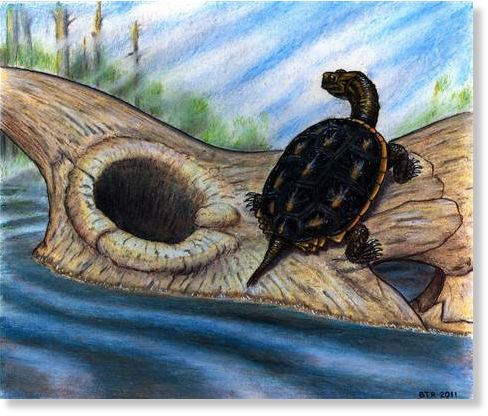
© Brian T. Roach, Yale Peabody Museum
Reconstruction
of the baenid turtle Boremys basking on a Triceratops dinosaur skull.
Boremys were one of several turtle species that survived the asteroid
impact that killed the dinosaurs (other than birds) at the end of the
Cretaceous Period.
Reconstruction
of the baenid turtle Boremys basking on a Triceratops dinosaur skull.
Boremys were one of several turtle species that survived the asteroid
impact that killed the dinosaurs (other than birds) at the end of the
Cretaceous Period.
What does it take to survive a
catastrophic meteor impact? The tough turtles of the Cretaceous know a
bit about that; they seem to have survived the mass extinction that
wiped out the dinosaurs because of their slow metabolisms and aquatic
lifestyles, researchers now say.
"Turtles are very tough animals, if times get tough they can go into a
state of animation," said study researcher Tyler Lyson, of Yale
University. "Animals that were living in the water were kind of
protected against whatever killed the land plants and the dinosaurs."
Essentially, since their bodily processes were so slow, needing very
little energy, they could survive on sparse resources during and after
the wipeout of dinosaurs.
The conclusion is based on a newly discovered turtle fossil
from North Dakota, which dates back 60 million and 65 million years ago.
The specimen belongs to a turtle species thought to have survived
global extinction, Lyson said, because fossils of the same species have
been found in rocks deposited up to 75 million years ago.
Tough turtles
The global extinction event that killed the dinosaurs, called the K-T
boundary due to its special signature in rock layers, was most likely
set off by a meteorite strike, though the true sequence of events is
hotly debated. Some researchers believe a set of world-shattering volcanic eruptions darkened the sky, which may or may not have been caused by the meteor.
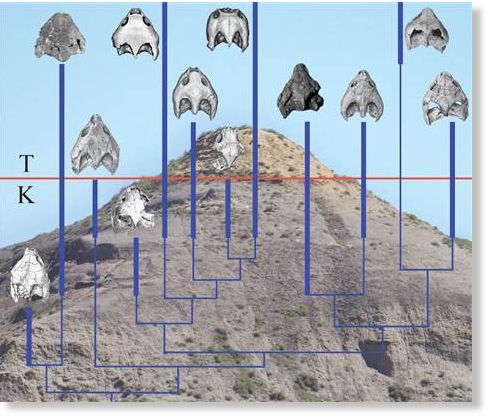
© Erik Freeman
Diagram
of the many types of turtles that survived the K/T extinction event.
The skulls of these turtles are illustrated (as viewed from above) as
are their fossil record (thick blue bars) and evolutionary relationships
(thin lines connecting bars). The red line marks the extinction event,
and is matched with the photographic of the geologic section in the
background. Eight different lineages of turtles survived.
Diagram
of the many types of turtles that survived the K/T extinction event.
The skulls of these turtles are illustrated (as viewed from above) as
are their fossil record (thick blue bars) and evolutionary relationships
(thin lines connecting bars). The red line marks the extinction event,
and is matched with the photographic of the geologic section in the
background. Eight different lineages of turtles survived.
The
turtles, along with other burrowing and water-living animals, survived
the dinosaur-killing whole-Earth extinction event, which extinguished 90
percent of the animal and plant species living on land, including
land-living turtles.
"If you only looked at turtles across this boundary you wouldn't think there was an extinction,"
Lyson told LiveScience. "Small animals that have a slow metabolism and
live in the water do very well across the K-T boundary."
These turtles lived in lakes and streams in North America, where they
ate soft plants and crustaceans. They would have resembled the painted
or cooter turtles of today, Lyson said, though they aren't closely
related to any living turtle species. They were part of a very large
group of species called the baenid turtles, at least eight of which
survived the extinction event only to vanish later by some other means.
Extinction after-party
After the land-based wipeout, the remaining small mammals populating the Earth
spread in what's called "adaptive radiation," where a limited number of
species fans out and diversifies in empty habitats. The living mammals
underwent rapid evolution and spread into the niches vacated by other
animals, including the dinosaurs.
This
is the Hell Creek Formation in southwestern North Dakota where many
fossils, including dinosaurs and turtles, have been collected. The K/T
boundary – the point in the record at which the extinction took place —
is about where the yellow sand meets the gray mudstone.
Even
though turtles had the metabolic upper hand to survive the extinction
event, the mammals beat out these tough turtles in the race to repopulate land.
"In the water, before and after the boundary, it was business as
usual. A lot of these smaller species are around right after the
impact. Not a whole lot changed," Lyson said. "Mammals just have more of
a rapid turnover, so they are able to more quickly adapt to their
environment and their changing surroundings."
But this story of survival has a sad ending. After enduring more than 85
million years on Earth, the baenid turtles ultimately died out around
40 million years ago, probably when North America hit a dry spell during
the late Eocene Epoch.
Beyond
the orbit of Mars, but not as far as Jupiter, lurk the many hundreds of
thousands of rocky bodies collectively known as the asteroid belt.
Many solar systems are thought to contain such belts, and science
fiction movies and television shows often present these bands as
rock-clogged expanses that would challenge any celestial navigator. It
may be so, in other systems, but in our asteroid belt, the rocky bodies are actually quite far apart from each other.
Humankind will soon be getting an inside look at this often overlooked
bit of celestial real estate, courtesy of NASA's Dawn mission. On
Saturday, July 16, after a four-year journey, the Dawn spacecraft will
reach Vesta, the second-largest body in the belt. [Photos: Asteroid Vesta and NASA's Dawn]
From there, Dawn will go on to orbit the belt's biggest object,
Ceres, in 2015. Ceres accounts for nearly a third of the asteroid
belt's mass, and is the largest "dwarf planet" in the solar system,
outranking Pluto.
Dawn will be the first spacecraft to orbit one body, let alone two, in
the asteroid belt. In so doing, Dawn will further characterize two
distinct, major objects in the belt, shedding light on some of its
greatest mysteries, which are:
Origin of the scattered stones
A major planet never formed where the asteroid belt lies, scientists
think, because nearby of disturbances caused by Jupiter's gravitational
tug. The giant planet's gravity accelerated the growing agglomerations
of dust in the region of the belt, interfering with the slow, step-wise
buildup to larger bodies, and booting some objects out entirely.
"The asteroid belt suffered from having this really bad neighbor next
door," said Christopher Russell, a professor of geophysics and space
physics at the University of California, Los Angeles, and principal
investigator for the Dawn mission.
Learning more about the locations of asteroid belts in other solar systems will help confirm the theory that our belt's sparse rocks are a result of the gravitational meddling of giant planets.
Dry to wet
Although Vesta and Ceres
are relatively close to each other (Vesta's orbit is about 2.4 times
the Earth-Sun distance and Ceres' is 2.8 times that disance), the two
objects are strikingly different. Essentially, Vesta is "dry" while
Ceres is "wet."
"Vesta is very much like the Moon and Earth," Russell said. "It's a
rocky body with an iron core." Ceres, for its part, "is more like rock
and water," he told Life's Little Mysteries.
Scientists' best guess as to the reason behind these contrasting
compositions has to do with when the bodies formed. Both Vesta and Ceres
are in the ballpark of 4.6 billion years old, coming together when the
rest of the solar system's major bodies took shape. "But exactly when
they were made back then, if differing by a few million years, is
important," said Russell.
Our solar system emerged from the collapse of a massive cloud of gas and
dust. An explosion of a nearby star in a supernova seeded this cloud
with heavy elements, including short-lived radioactive ones such as
aluminum-26. [What If Our Solar System Formed Closer to Milky Way's Edge?]
Those bodies that accreted first contained more short-lived elements,
which then decayed and heated the surrounding matter. "The body gets to
the boiling point, so then water starts to boil off and that starts to
dry the material," explained Russell.
The thinking is that Vesta formed just a few million years before Ceres,
and as such became hot, molten and dried out. Ceres, instead, chilled
out.
Not much Vesta there, but plenty here
If Vesta did indeed form before Ceres, that might also explain the
mystery of why there are so few "V-type," or Vesta-like asteroids
observed in the belt. Most of those known appear to have come from Vesta
itself, having been blasted out by a collision long ago.
That blast apparently sent some Vesta fragments Earth's way, too. About
one out of 20 meteorites - space rocks that survive passage through
Earth's atmosphere all the way to the ground - appear to have come
from Vesta, Russell said.
More puzzingly, none of the meteorites that have ever been recovered
appear to have originated from Ceres. Russell said this is probably
because the icy chunks that have been knocked off of Ceres sublimate -
that is, turn to gas - when subjected to sunlight or the heat of
entry into Earth's atmosphere, and so they never reach terra firma.
The Dawn probe will study Ceres' surface to gauge this hypothesis.
Alternatively, Jupiter's gravity might again play a role, pumping much
more of Vesta's shrapnel our way compared to Ceres'.
Bonus boggler: Bringers of life and death?
While planning the Dawn mission, some scientists voiced concerns about
sending the probe to Ceres. "They said Ceres is an object of
astrobiology interest," Russell said. "If it's got water and a good
temperature out there under its surface, we don't want [the Dawn
mission] contaminating it."
Russell said his team will certainly aim to prevent Dawn from
accidentally crashing into Ceres. A future mission could someday assess
the dwarf planet's habitability.
That Ceres or other objects in the asteroid belt might harbor life, or its ingredients, speaks to the "panspermia" theory of life's origins here on Earth.
The panspermia theory suggest that life did not begin here, but rather
that biological entities developed elsewhere, and then a meteorite
delivered them to Earth. Perhaps that rock chunk chipped off Ceres, or
another icy asteroid, and somehow made it to Earth.
Overall, asteroids certainly appear to have had quite an impact,
literally and figuratively, on life on Earth. A minimum six-mile-wide
asteroid helped doom the dinosaurs when it crashed here 65 million years
ago.
Yet bombardment from icy asteroids early in Earth's history possibly
brought huge amounts of water and carbon-containing compounds to the
planet, both of which are critical for creating and supporting life.
"You're looking at two scenarios, where alternatively life was
negatively affected by asteroids and other times positively affected by
asteroids," Russell said. "Asteroids are neither bad nor good."
Dinosaurs killed by meteor, new fossil discovery proves
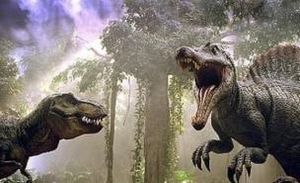
A horn belonging to the Triceratops family appears to indicate that the dinosaurs were wiped out by a meteor.
Archaeologists have unearthed a single 45cm-long fossilised browhorn
belonging to a group of herbivores that included the famous
Triceratops, at a geological site in the south-east of Montana, US.
While this is, in itself, not an unusual find, it is the placement of the fossil in the rock that is most important.
The fossil was found just 13cm below the layer of rock known as the
Cretaceous-Tertiary - the point in rock formation that marks the
extinction of the dinosaurs.
Scientists now believe this offers proof that dinosaurs were
alive right up until the point where they suddenly disappeared - adding
weight to the theory that they were suddenly and abruptly killed off.
Importantly, this find bridges the three-million-year time gap between
the death of the dinosaurs and the impact of a giant meteor, which hit
the Earth near Mexico around 65million years ago.
'This discovery provides some evidence that dinosaurs didn't slowly die
out before the meteor struck,' Dr Tyler Lyson of Yale University
explained.
'The fact that this specimen was so close to the boundary indicates that
at least some dinosaurs were doing fine right up until the impact.'
Scientists have previously identified more than 1,000 species of
non-avian dinosaur - however, including birds this number jumps to more
than 8,000.
The
following video is a full interview in the Russian language on NTV with
the discoverer of Comet C/2010 X1 aka 'Elenin', astronomer Leonid
Elenin. Below is the translation of the original interview's transcript
available on the Russian TV website.
Today rumors about the imminent end of the world, which have
recently appeared more frequently and spread around the world much
faster, are demonstrating their power to influence minds.
Thousands of residents of Rome gathered everything of value and fled the city, scared by the prophecy of a terrible earthquake.
100 years ago, an Italian self-taught astronomer allegedly announced
that on May 11th, 2011 the "eternal city" would be wiped from the face
of the Earth.
The source of global hysteria became Comet Elenin, currently flying
towards Earth, and the first to be discovered by a Russian astronomer in
20 years. There's a massive discussion about it on the Internet, that
alien spaceships are hiding behind it and are approaching the Earth. The
governments supposedly know about this, but hide the information from
the public. According to another version, the planet faces a collision
with the comet.
NTV correspondent Sergei Malozemoff was able to confirm that the rumors
are so widespread, the scientific community decided to issue its own
response.
The panic on the Internet began with a genuine snapshot, published by
one of the Argentine astronomers, and few people bothered to pay
attention to the date - April 1st. In the center - a comet with a
symbol C 2010 X1 Elenin, and on each side, wrote the scientist, -
something that looks very much like two alien spacecraft. They are on
their way! - the Internet exploded and started to await the end of the
world.
Roman Chelyuskin, chief editor of the blog service said: "This issue
continues to gain momentum. For instance, during the first week of May,
the number of posts about comet Elenin was 30 times higher than the
number of posts that were made in April.
The name of the comet discoverer - Russia's Leonid Elenin - was
immediately transcribed as "a catastrophe of total annihilation", and
also "aliens from the planet Nibiru in November." Some even recalled
that Leo is also the name of the protagonist from the catastrophe movie
about a comet, Deep Impact. Basically, all these 'signs' were
pointed out to suggest that Elenin the person doesn't actually exist.
Even though Platon Elenin is the second name of [Russian billionaire]
Boris Berezovsky. And world governments are apparently hiding the horror
that awaits us.
A simple search on the open scientific sources led NTV Group to the
Institute of Applied Mathematics (named after M. B. Keldysh), the
workplace of the very same Leonid Elenin. NTV correspondent called him
and was convinced that he is indeed real.
After a strong handshake and no signs of deceit, we discovered that
Leonid Elenin is 29 years old, he studied at the Moscow Aviation
Institute, then worked as a property agent, and after the crisis has
returned to his beloved science. To everyone who doesn't believe him, he
shows his institute's pass. He complains: someone already registered
under his name on Facebook, and promotes a cult that offers the only
salvation.
Leonid Elenin, researcher in the Institute of Applied Mathematics says: "I receive letters that ask me to present a passport."
Interviewer: "Where the letters are coming from?"
Leonid Elenin: "Well, most of them come from the U.S.. Right now, during the last week, I was 'buried' by letters from Russia. From U.S. also came: 'We don't believe you. Show your passport.' To which I replied: Why do I have to show you anything?"
It happened in December. Leonid was watching the sky on a remote
connection using telescope of American colleagues in New Mexico, and -
score! - he noticed an unrecorded object. This was a new comet with a
diameter of about three kilometers. According to international rules,
the comet was immediately assigned his name. And notorious alien ships
in the picture, alas, have a much more prosaic explanation.
Leonid Elenin: "These are actually stars. What happens is, that
during a certain process of adding several frames in relation to the
velocity of the comet, these stars stretch into tracks. In principle,
any astronomer should know this."
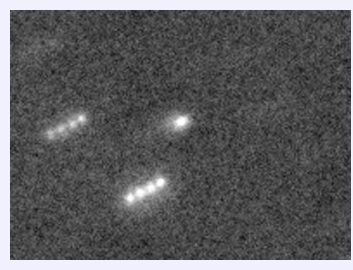
© Leonid Elenin
SpeedN-NM
Comet Elenin (C/2010 X1) appears as a tiny, faint smudge in this stack
of four 240-second exposures taken on the morning of December 10, 2010,
with a remote-controlled telescope in New Mexico. (The quadrupled stars
are due to the comet's motion between exposures.)
SpeedN-NM
Comet Elenin (C/2010 X1) appears as a tiny, faint smudge in this stack
of four 240-second exposures taken on the morning of December 10, 2010,
with a remote-controlled telescope in New Mexico. (The quadrupled stars
are due to the comet's motion between exposures.)
Interviewer: "It is similar to a bright spot being smeared on the picture taken at night."
Leonid Elenin: "Yes, of course. And the discovery of a comet was my
dream, a childhood dream. And it was accomplished. Of course, I was
happy and so on. But now, all this is happening around my comet. There
are, for example, the following letters: 'Leonid, tell us the truth. I
am selling my house. And my family and I are heading for the mountains.' It's nothing but hysteria. More so, the comet is absolutely safe for the Earth. It will pass at a distance of 34 million kilometers from the planet."
According to Elenin's calculations, X-1 will pass the Earth in October.
It will be seen with binoculars or even with the naked eye. Then the
comet will touch the orbit of Mercury, and if it does not dissipate, it
will rush away from the solar system. And we will not see it again for
another 12 thousand years.
Supporters of doomsday, as the astronomer assured us, will have to invent a new theory.
Comment: Indeed, the hysteria and lies
surrounding comet Elenin are ridiculous, and could be dismissed as more
"loony talk" if only the similar circus generated around comet Hale-Bopp
15 years ago hadn't led to tragic consequences. See Heaven's Gate mass suicide to understand where those pied pipers in the alt. community are leading the vulnerable.
It's an unfortunate fact that many people do have impressionable minds,
easily influenced by paranoid fables bordering on the criminal. Some of
them are also part of deliberately orchestrated COINTELPRO campaigns, which are intended to further muddy the waters. Read Elenin, Nibiru, Planet-X - Time for a Sanity Check article for some clarity on this mess.
Here's
a bizarre milestone. On June 28, 1911, a meteorite fell over the
outskirts of Alexandria, Egypt. The meteorite broke into several smaller
rocks, one of which may have reduced a dog to a burnt smear.
On that fateful morning a century ago, the Nakhla meteorite broke over
the village of Abu Hummus, and 40 of these fragments were recovered for
research.
Although the 1.3-billion-year-old rock is famous in astrogeological
circles for its Martian origins, the Nakhla rock also has the lurid (and
perhaps unearned) reputation as a dog-smusher. Explains The Smithsonian:
W.F. Hume, minister of the Geological Survey of Egypt, began taking
eyewitness statements, and two months later published his report, "The
First Meteorite Record in Egypt."
One of those statements, from a farmer who claimed to have seen a
fragment fall on a dog, gave rise to the popular myth that Nakhla, as
the meteorite would be named, was "the dog killing meteorite," an
unsubstantiated claim, but the dramatic account is irresistible: "The
fearful column which appeared in the sky at Denshal was substantial. The
terrific noise it emitted was an explosion which made it erupt several
fragments of volcanic materials. These curious fragments, falling to
earth, buried themselves into the sand to the depth of about one metre.
One of them fell on a dog...leaving it like ashes in a moment."
There's not a ton of scholarship devoted to whether or not a
dog was doomed by the heavens, but if this incident really did come to
pass, everything science fiction cinema's taught us about canines and cosmic catastrophe is terrifically wrong.
Additionally, the rock's igneous formation and the presence of amino acids
on the rock have led some scientists to speculate that the meteorite
offers potential evidence of life on Mars, but the organic molecules
probably ended up on the Nakhla sample as a result of terrestrial
contamination. In any case, hug your dog today and be happy they're not
on the receiving end of clumsy space detritus.
The Shoemaker (formerly Teague) Impact Structure - located in
Western Australia in a drainage basin south of the Waldburg Range -
presents an other-worldly appearance in this astronaut photograph. The
Shoemaker impact site is approximately 30 kilometers (19 miles) in
diameter and clearly defined by concentric ring structures formed in
sedimentary rocks (brown to dark brown, image center). The rocks were
deformed by the impact event approximately 1.63 billion years ago (as
reported by the Earth Impact Database). Other age-dating analyses of granitic rocks at the core of the structure call this age into question (Pirajno et al. 2003).
Several saline and ephemeral lakes - Nabberu, Teague, Shoemaker, and
numerous smaller ponds - occupy the land surface between the ring
structures. Differences in color result from both water depth and from
suspended sediments, with some bright salt crusts visible around the
edges of smaller ponds (image center). A Landsat 7 view of the Shoemaker structure illustrates the extent of these ephemeral lakes, or playas, in the region.
The Teague Impact Structure was renamed Shoemaker in honor of Dr. Eugene M. Shoemaker (1928-1997), a pioneer in impact crater studies and planetary geology, as well as the founder of the Astrogeology Branch of the U.S. Geological Survey.
Reference
Pirajno F., Hawke, P., Glikson, A.Y., Haines, P.W., and Uysal, T. (2003). Shoemaker impact structure, Western Australia. Australian Journal of Earth Sciences, 50:775-796.
Astronaut photograph ISS028-E-14782
was acquired on July 6, 2011, with a Nikon D2Xs digital camera using a
200 mm lens, and is provided by the ISS Crew Earth Observations
experiment and Image Science & Analysis Laboratory, Johnson Space
Center. The image was taken by the Expedition 28 crew. The image has been cropped and enhanced to improve contrast. Lens artifacts have been removed. The International Space Station Program supports the laboratory as part of the ISS National Lab
to help astronauts take pictures of Earth that will be of the greatest
value to scientists and the public, and to make those images freely
available on the Internet. Additional images taken by astronauts and
cosmonauts can be viewed at the NASA/JSC Gateway to Astronaut Photography of Earth. Caption by William L. Stefanov, Jacobs/ESCG at NASA-JSC.
Kenya: Meteor Sighted Before Crashing in Kilimambogo
Residents
of the towns of Kilimambogo and Tala in Kenya spotted an object in the
sky on Saturday. Those who did not see the object, heard it, as it
crashed to the ground.
Residents of the nearby towns of Yatta, Kakuzi and Kangundo reported
hearing an explosion around 10am, which they said was comparable to a
plane crash or bomb explosion.
Eyewitnesses stated that the object was spinning on impact when it landed in a cornfield.
Police and military officers quickly responded to the scene and found an
extremely hot object, weighing in at approximately 11 pounds. They
eventually took the object for expert analysis.
The object was a smooth black rock, which area officials believe to be a meteor from outer space.
There were no reported injuries from the impact of the extraterrestrial rock.
Hysteria
of cosmic proportions! Missouri, US: Cape doctor says he's not leading
survivalist group and has been harassed by believers in 'Planet X'
Dr.
Byron Glenn of Cape Girardeau says he wants nothing to do with the
people he sees as online crackpots trumpeting a "conspiracy wrapped in
an enigma."
He's not alone. The folks at NASA have fruitlessly tried to debunk what
they say are wild conspiracies involving Comet Elenin -- a "wimpy"
projectile expected to remain more than 20 million miles from Earth.
Glenn said he's been harassed and threatened by doomsday believers of
"Planet X," an idea spreading in the blogosphere and in online chat
rooms about a brown dwarf star, a low-mass object rapidly approaching
the solar system and bent on destroying much of the Earth. He said that
believers, apparently followers of Terral L. Croft, or "Terral03" as he
is known in anxiety-ridden chat rooms, have shown up at his North Mount
Auburn Road family practice demanding answers.
"I'm not the leader of any group. I can't tell people what to do. I don't want to," Glenn told the Southeast Missourian
last week when asked about his connection to Croft's "research group,"
reportedly made up of people who plan to head for caves in Missouri's
Ozarks in the coming weeks. The plan, according to Croft and a series of
online correspondence in recent months, is to ride out the earthquakes,
floods, volcanoes and other calamities they believe to be coming,
thanks to the magnetic and polarizing effects of Planet X.
Croft, in letters to members of the group, describes Glenn as his good
friend, a man he's been acquainted with for some time. He and others say
Glenn is leading the Ozark survivalists. Glenn says he's never met
Croft, a man he describes as "out there" and "on the edge," a Revelation
chaser and Sept. 11 conspiracist.
"I am not the leader of any Ozark survival group," Glenn said.
Others say he is -- most notably Croft, who in his more recent Internet
messages claims "our survival group leader and physician Dr. Byron Glenn
and his engineer son" saw some disturbing things in their "expensive
telescope."
"Dr. Glenn was able to zoom in on the area of our dwarf star to realize
he was looking at a monster of great size. We cannot see the actual
dwarf star, but now he can make out the dark area and the dancing stars
in the background created by the gravitational leasing effect," Croft
wrote in his communique.
He was not reachable at a phone number provided to the Southeast Missourian by a source from New York who said he fears the group may be attracting and hurting unwitting believers.
Croft believes the object will become visible as a "second sun" in early
September, at which time the "earthquakes, volcanoes, rogue tides, mass
animal deaths and the whole 9 yards are going to escalate out of
control in August and September for the crap to hit the fan ..."
Croft, who reportedly resides in Florida, and others say they are
planning to "head for the hills" around Aug. 1, and that a series of
photographs will clearly show the force of destruction he asserts is
coming. He said doctors, engineers, military special forces personnel
and enough trained specialists to man a small hospital will, too, be
heading for the Ozark caverns, apparently the safest place to survive
when the substellar object does its worst, Croft asserts.
It appears survival is becoming a financial matter. In some
correspondence, the group talks about raising money to accommodate
hundreds of people looking for space in the caves, those who would not
be able to cover the costs otherwise.
"All of you have a place with me at the Ozark cavern location, but you
must have sufficient food and supplies listed in the survival video and
link for a six-month period," Croft writes.
Glenn claims it's all a bunch of nonsense. He said the "expensive
telescope" he is supposed to own is actually an 8-inch model with a
camera lens, and that he is nothing more than an amateur astronomer.
While the doctor acknowledges he did take some photos of the comet, he
said people in the chat room group are attaching more significance to
the pictures than they should. Unlike the Harold Campings of endtime
prophesies that caught the public's attention and scorn this year, Glenn
said he doesn't, nor does anyone, know the hour of the Earth's fall.
But Glenn says he has seen something in that telescope. Something on three consecutive nights. Something that didn't go away.
While he may not ally himself with the "research group," the Cape
Girardeau doctor does believe there's something very bad in the wind.
"I'm watching. I have a watchful eye," Glenn said, asserting that
something serious is causing a rash of volcanoes and massive
earthquakes, like the 9.0 quake that struck Japan in March. He claims to
know something, the same thing NASA knows, the president knows, the
Defense Department knows. But Glenn says there's no use in talking about
it -- and the leaders in the know can't talk about it either.
"Who's going to go to work. Who's going to the power company? Think
about that. How much food would be on the shelf at grocery stores? How
jam packed would the highways be?" he said, referring to what he
believes would be the chaos caused if the public learns of looming
destruction.
"If you don't go through the ruse, people know something's up. Everybody
must be entertained," Glenn said, referring to a line in the movie Network.
Absolute nonsense, said Dr. Don Yeomans, manager of NASA's Near-Earth
Object Program Office in California, the people who watch comets and
asteroids for a living.
Yeomans said there's been a lot of Internet buzz about brown dwarf stars
and the like in recent years, something he said began with a woman who
said she was channeling aliens from a star system. He said some folks
who apparently flunked high school science say this Planet X is
imminent.
It's not, Yeomans said.
"It's completely baseless," he said. If a brown dwarf were to pass by
the Earth and sun, as soon as Sept. 26, "it would light up the sky even
without a telescope now. Why haven't we seen it and why have the effects
not been noted by the motions of the other planets -- which they
haven't?"
Comet Elenin, first discovered late last year, has been gradually moving
closer to the Earth, Yeomans said. It is not expected to move any
nearer than 22 million miles from the Earth.
"That's not even that close," Yeomans said, calling Elenin a fairly modest, mediocre comet.
"It's a bit wimpy by cometary standards," he said, noting the light makeup of comets -- dust and ice.
Yeomans said NASA has given up on trying to combat all of the misinformation online.
"So many of them, they don't talk science," he said. "They're passionate
believers who enjoy the publicity they get. It's whistling into the
wind trying to convince them otherwise."
The "research group" sees something different. And whatever Glenn knows, he's not telling.
Asked about it all, he referred to the famous line in the military tribunal movie A Few Good Men:
"You can't handle the truth."
mkittle@semissourian.com
Comment: This article is a good example of how a
group of unstable people and their hysterical actions can be used to
twist and ridicule valid topics. Yes, comet Elenin isn't Planet X, and
the end of the world is not imminent, though the science points out that
calamities are highly probable, especially the next Ice Age.
Notice how the seasonal and "heading for the mountains" loonie is being
called "out there" and "on the edge," due to him being a "Sept. 11
conspiracist". Although, in this case, the "out there" label is quite
justifiable, sweeping generalizations like this influence the minds of
others and damage efforts of genuine and reasonable people.
"Earthquakes, volcanoes, rogue tides, mass animal deaths and the whole 9
yards" are indeed happening, and may increase in the nearest future.
But there is so much confusion and plain hysteria around the issue, that
it plays in hands of those who have a vested interest in keeping the
truth from the rest of us.
Read Elenin, Nibiru, Planet-X - Time for a Sanity Check article for some clarity on this mess.
For further background see:
Cosmic Propaganda Alert! Comet Elenin: Just Passing By - With SOTT Commentary
Comet Elenin is Coming!
Pole Shift in March? Not Likely!
Comet Elenin: Harbinger of What?
Comet Elenin Update!

© First Coast News
Strange lights seen over First Coast, Michele Casey points out what she saw from Vilano Beach.
Strange lights seen over First Coast, Michele Casey points out what she saw from Vilano Beach.
Vilano Beach, Florida -- Some strange lights were seen over the First Coast by many of you early this morning.
We had several people call us, and more chime in on our Facebook page about the very bright light that appeared in the sky around 6:15 Monday morning.
Some were worried that it was a plane crashing into the ocean, but the
FAA hasn't reported any downed planes, so that's not the issue.
One website, run by the American Meteor Society, said the bright lights were probably a fireball. They define that as an "extra bright meteor."
"At first I thought it was an airplane coming across," said Michele
Casey, pointing to the portion of sky where she observed the light.
She was having coffee on her Vilano Beach home's front porch when she saw it.
"But it moved too fast to be a plane, and then it ignited to orange."
She said it moved over the beach and disappeared into the ocean. She
said it only lasted a couple seconds, and didn't make a sound.
We heard from folks in Jacksonville, and as far north as Waverly, Georgia with reports of seeing the "fireball."
There was no named, high rate meteor shower last night, but that, of
course, doesn't mean that debris from space won't enter our atmosphere.
According to the American Meteor Society, the next best chance to see
frequent meteors will be the Delta Aquariids at the end of July.
Comet Hartley 2 Leaves a Bumpy Trail
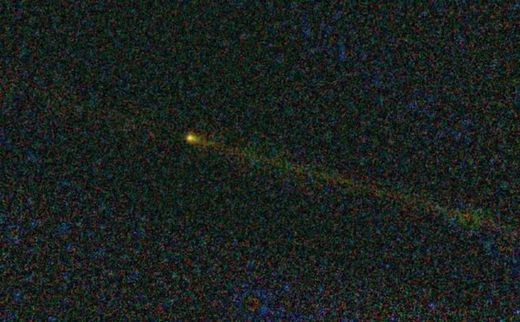
© NASA/JPL-Caltech/UCLA
Comet
Hartley 2 as seen by WISE. Data from the infrared telescope revealed
that the comet's trail, seen here as the long, thin yellow line,
consists of particles as large as golf balls.
Comet
Hartley 2 as seen by WISE. Data from the infrared telescope revealed
that the comet's trail, seen here as the long, thin yellow line,
consists of particles as large as golf balls.
New
findings from NEOWISE, the asteroid- and comet-hunting portion of NASA's
Wide-field Infrared Survey Explorer mission, show that comet Hartley 2
leaves a pebbly trail as it laps the sun, dotted with grains as big as
golf balls.
Previously, NASA's EPOXI mission, which flew by the comet on Nov. 4,
2010, found golf ball- to basketball-sized fluffy ice particles
streaming off comet Hartley 2. NEOWISE data show that the golf
ball-sized chunks survive farther away from the comet than previously
known, winding up in Hartley 2's trail of debris. The NEOWISE team
determined the size of these particles by looking at how far they
deviated from the trail. Larger particles are less likely to be pushed
away from the trail by radiation pressure from the sun.
The observations also show that the comet is still actively ejecting
carbon dioxide gas at a distance of 2.3 astronomical units from the sun,
which is farther away from the sun than where EPOXI detected carbon
dioxide jets streaming from the comet. An astronomical unit is the
average distance between Earth and the sun.
"We were surprised that carbon dioxide plays a significant role in comet
Hartley 2's activity when it's farther away from the sun," said James
Bauer, the lead author of a new paper on the result in the Astrophysical Journal.
JPL manages and operates the Wide-field Infrared Survey
Explorer for NASA's Science Mission Directorate, Washington. The
principal investigator, Edward Wright, is at UCLA. The mission was
competitively selected under NASA's Explorers Program managed by the
Goddard Space Flight Center, Greenbelt, Md. The science instrument was
built by the Space Dynamics Laboratory, Logan, Utah, and the spacecraft
was built by Ball Aerospace & Technologies Corp., Boulder, Colo.
Science operations and data processing take place at the Infrared
Processing and Analysis Center at the California Institute of Technology
in Pasadena. Caltech manages JPL for NASA.
Journal Reference:
James M. Bauer, Russell G. Walker, A. K. Mainzer, Joseph R. Masiero,
Tommy Grav, John W. Dailey, Robert S. McMillan, Carey M. Lisse, Yan R.
Fernández, Karen J. Meech, Jana Pittichova, Erin K. Blauvelt, Frank J.
Masci, Michael F. A'Hearn, Roc M. Cutri, James V. Scotti, David J.
Tholen, Emily DeBaun, Ashlee Wilkins, Emma Hand, Edward L. Wright, the
WISE Collaboration. WISE/NEOWISE observations of comet 103P/Hartley 2.
Astrophysical Journal, 2011; (accepted) [link]
Bright fireball over Poland
Late evening of July 7th, a bright fireball lit up the sky over
southwestern Poland. The meteor has been registered by the Polish
Fireball Network (PFN).
The first images obtained by cameras placed in a station in the
village of Podgorzyn - operated by Tomasz Krzyzanowski - were very
interesting because they showed that the object crossed the greater part
of the sky. Recordings of the cameras working in a station in Szamotuly
operated by Maciej Reszelski also showed a very bright and long trace
at low altitude.
Another camera working as a Fireball Shield in the town of Nysa also
registered the object. Due to the noise of the latter camera, it was
difficult to determine the exact coordinates of the trace in the sky.
The analysis of the collected material establish that the phenomenon
began in the Wroclaw area at an altitude of 88.2 km. After 1.5 seconds,
at an altitude of 74 km there was a flash of light of about 1 mag, after
which the meteor clearly brightened. Perhaps it was then that a
fragmentation of the object occurred.
For the last two seconds there were two fragments clearly
visible moving at different speeds and with fast decreasing brightness.
The whole phenomenon lasted for 5.2 seconds and ended up in the vicinity
of the city of Zielona Gora, at an altitude of 44.5 km. Its trace had a
length of up to 135 km.
The initial velocity at the entrance of the object in the atmosphere was
27.1 km/s, and after about 3 seconds began to rapidly decline when the
body reached a height of 60 km. At the end it amounted to 13.6 km/s.
This is too fast though to make it possible for a small fragment to
reach the ground; the whole object burned upon entering the atmosphere.
Experts agreed that it came from the vicinity of Jupiter.
You can read the full report of the observation, as prepared by PKiM, here (in Polish).
Comment: According to the Polish Fireball
Network, the orbit of the body was similar to the orbit of the Alpha
Capricornids (CAP), but due to a calm nature of its changes in
brightness, the meteor came from the main belt of planetoids rather than
being cometary in nature. The approximate mass of the body was likely
only 0.5-1 kg.
UK: Fireballs Spotted in the Night Sky?
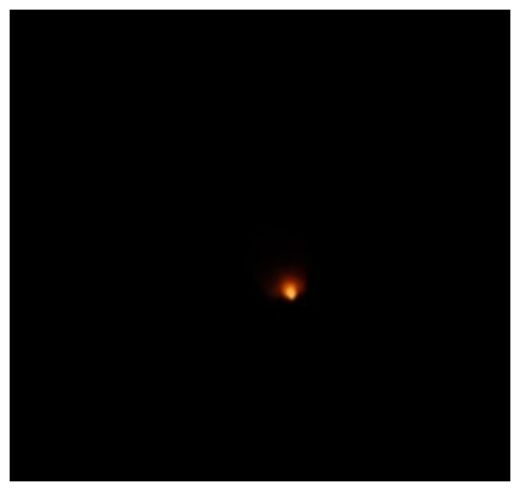
© Newtownabbey Times
Spotted
high in the sky above Ballyclare by Trevor McCusker, it's thought this
object may be a fireball carrying information on the ancient history of
the solar system.
Spotted
high in the sky above Ballyclare by Trevor McCusker, it's thought this
object may be a fireball carrying information on the ancient history of
the solar system.
Meteorites, fireballs or maybe something more extra-terrestrial may have been seen in the Ballyclare sky in the past fortnight.
Eagle-eyed Ballyclare man Trevor McCusker sent these pictures in of three strange objects he spotted in the night sky.
On Tuesday, July 5, the photographer spotted what he described as a "red ball" in the sky around 11pm.
He said: "It was like a football, It was going very fast from south west
to north east. It had no tail just a round ball of fire."
Then on the following Saturday, July 9, he spotted a dark object in the sky at around 9pm.
"It was a black type colour object in the sky," he said.
"On the bottom left hand side of the object it was red. It was
coming close to earth, I ran into the house and got my camera but by
then it had went back up into the sky by the time I got the photograph.
"About two-and-a-half hours later I saw another red long object. It also came close to earth and went back up into the sky."
According to the Armagh Observatory a similar report has been made of a fireball in the sky above Ballyeaston village on July 1.
Astronomer John McFarland could not verify these latest witness accounts, but said sightings were not particularly rare.
He said: "Every year there is over 40,000 tons of space debris which
falls to the earth. Some of it can be as small as a grain of sand or up
to the size of an apple."
Massive Meteorite Found in China
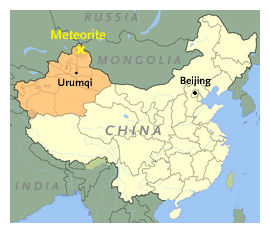
© Wikimedia Commons
Although
the exact location of the newly found meteorite has not been announced,
its general location is the mountainous border region of China's
Xinjiang Uyghur province.
Although
the exact location of the newly found meteorite has not been announced,
its general location is the mountainous border region of China's
Xinjiang Uyghur province.
As the meteorite specialist
for the Beijing Planetarium, Baolin Zhang gets all kinds of unusual
reports - like the dramatic (but ultimately specious) tale of a
peasant woman who recently found a blue-ice "meteorite" in her yard.
But credible reports of a massive, oddly shaped and colored stone in the
remote Altai Mountains of Xinjiang Uygur province (in northwest China)
got his attention. So earlier this month he assembled a small team to
check it out firsthand. The trek was cold and arduous, involving a
rented jeep, borrowed horses, and even a camel to cross rugged terrain
and rivers still swollen with snowmelt.
On the afternoon of July 16th, after reaching a mountainous crest 9,500
feet (2,900 m) up Zhang and his team finally spotted their objective: a
large dark-brown stone jutting from the ground. It took only moments for
him to realize what they'd found. "This is a huge iron meteorite," he
exulted as cameras recorded the scene.
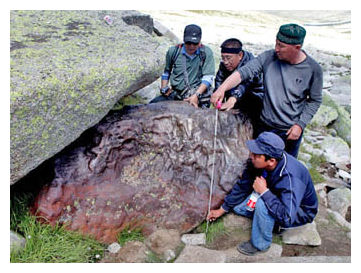
© Xinhua
Chinese
researchers measure a huge iron meteorite found in a remote mountainous
region in July 2011. The oblong metallic object has an estimated mass
of 25 tons or more.
Chinese
researchers measure a huge iron meteorite found in a remote mountainous
region in July 2011. The oblong metallic object has an estimated mass
of 25 tons or more.
Based on the size of the oblong
portion above ground, 7.5 feet (2.3 m) long and about half as wide,
Zhang thinks its mass is roughly 25 tons - and it could perhaps top 30
tons. Such an enormous find would rank as one of the largest meteorites known, perhaps even surpassing China's current record-holder, the 28-ton Armanty iron, found in the same region in 1898.
Apparently the big stone's existence has been well known among locals
for decades. A few scrawls of graffiti have been cut into the exterior,
which also bears "saw marks" that expose the interior. As Zhang reports,
"The surface was shiny silver, and I can clearly see exposed not only
the iron-nickel composition but also the unique grid lines," called a Widmanstätten pattern, that are common among iron meteorites.
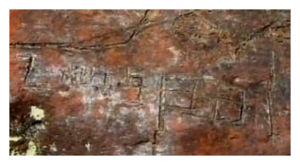
© China Central Television
A dozen names, some dating to 1980, are carved into the Xinjiang meteorite.
NASA to Land Astronauts Where No Man Has Gone Before - Asteroids
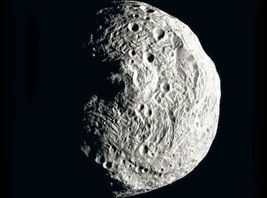
© AP Photo
The asteroid Vesta shot from a distance of about 15,000km by the Dawn spacecraft on July 17. If all goes to plan at NASA, there could be a man on one such astral body by 2025.
The asteroid Vesta shot from a distance of about 15,000km by the Dawn spacecraft on July 17. If all goes to plan at NASA, there could be a man on one such astral body by 2025.
And with no Scotty to beam them up, allocated 15-year time looks daunting
Houston: With the space shuttle now history, NASA's next great mission
is so audacious, the agency's best minds are wrestling with how to pull
it off: Send astronauts to an asteroid in less than 15 years.
The challenges are innumerable. Some old-timers are grousing about it,
saying going back to the moon makes more sense. But many NASA brains are
thrilled to have such an improbable assignment. And NASA leaders say
civilization may depend on it.
An asteroid is a giant space rock that orbits the sun, like Earth. And someday one might threaten the planet.
But sending people to one won't be easy. You can't land on an asteroid
because you'd bounce off - it has virtually no gravity. Reaching it
might require a NASA spacecraft to harpoon it. Heck, astronauts couldn't
even walk on it because they'd float away.
NASA is thinking about jetpacks, tethers, bungees, nets and
spider webs to allow explorers to float just above the surface of it
while attached to a smaller mini-spaceship.
Such a ship - something like a Star Trek shuttlecraft melded
with a deep sea explorer with pincer-like arms - is needed just to get
within working distance of the rock. That craft would have to be big
enough for astronauts to live in for a week or two. They'd still need a
larger habitat for the long term.
It would take half a year to reach an asteroid, based on current possible targets.
The deep space propulsion system to fly such a distance isn't perfected
yet. Football-field-sized solar panels would help, meaning the entire
mothership complex would be fairly large. It would have to protect the
space travelers from killer solar and cosmic ray bursts. And, they would
need a crew capsule, maybe two, for traveling between the asteroid
complex and Earth.
And all those parts - mini-spaceship, habitat/living area, crew
capsule, solar arrays and propulsion system - would have to be linked
together in the middle of space, assembled in a way like the
International Space Station but on a smaller scale.
Beyond all those obstacles, NASA doesn't even know which asteroid would be the best place to visit.
All this has to be ready to launch by 2025 by presidential order.
"This is the big step," said Kent Joosten, chief architect of the human
exploration team at Johnson Space Center. "This is out into the
universe, away from Earth's gravity completely... This is really where
you are doing the Star Trek kind of thing."
Source: Associated Press
Bright Meteor Over UK
Caught on a security camera, July 19th, 2011. No location recorded.
Sun Grazing Comet
A new video from NASA shows the sundiving comet of July 5th
interacting with the sun's atmosphere as it evaporates above the stellar
surface.
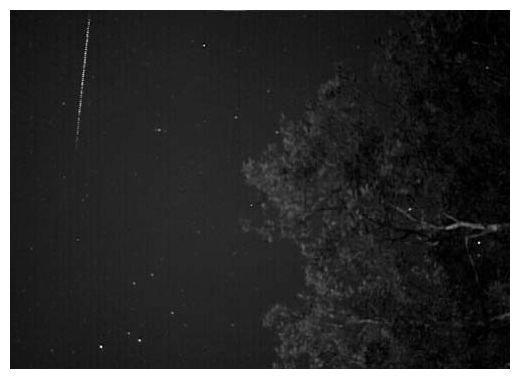
© All Sky Cameras / Peter Jenniskens
This
February eta Draconid was filmed by Peter Jenniskens with one of the
low-light-level video cameras of the Cameras for Allsky Meteor
Surveillance (CAMS) station in Mountain View, California, at 07:59:24 UT
on February 4, 2011.
This
February eta Draconid was filmed by Peter Jenniskens with one of the
low-light-level video cameras of the Cameras for Allsky Meteor
Surveillance (CAMS) station in Mountain View, California, at 07:59:24 UT
on February 4, 2011.
A surprise meteor shower spotted by skywatchers in February was
likely caused by cosmic "bread crumbs" left over from an undiscovered
comet that could potentially pose a threat to Earth, astronomers
announced today (July 27).
The tiny meteoroids that streaked through Earth's atmosphere for a few hours on Feb. 4 represent a previously unknown meteor shower,
researchers said. The "shooting stars" arrived from the direction of
the star Eta Draconis, so the shower is called the February Eta
Draconids, or FEDs for short.
The bits of space rock appear to have been shed by a long-period comet.
Long-period comets whiz by the sun only rarely, so it's tough to
predict when they last came through our neck of the woods - and when
they'll come back, researchers said.
That uncertainty is cause for some concern in this case, they added.
"If the meteoroids can hit us, so can the comet," said FEDs discoverer
Peter Jenniskens, of the SETI (Search for Extraterrestrial Intelligence)
Institute and NASA's Ames Research Center. "We don't know whether the comet has already passed us by or is still on approach."
Still, Jenniskens stressed that the chances of such a collision are extremely remote.
Scanning the night sky
Jenniskens heads the Cameras for Allsky Meteor Surveillance (CAMS)
project, which has been monitoring the San Francisco Bay Area's night
skies with low-light video cameras in an effort to map meteor showers.
CAMS cameras picked up the FEDs, bringing the tally of officially recognized meteor showers to 64.
The comet that produced the meteor shower is unknown. It may have last
zipped by the sun just a few hundred years ago, or many thousands,
researchers said. But it apparently came relatively close to Earth on
its last trip through the inner solar system.
At that time, the comet released a cloud of dust, which is now
returning. Some dust grains return earlier than others, depending on how
elongated their orbit ended up being, and the result is a continuous
stream of returning dust grains that we detect only when they barrel
into Earth.
"Earth gets hosed typically only once or twice every 60 years by such streams," Jenniskens said.
Learning more about the comet
Jenniskens teamed up with a colleague, Finnish astronomer Esko Lyytinen,
to investigate when the FEDs might make another pass. Lyytinen
calculated a possible return in 2016 or 2023, and after that not again
until 2076, researchers said.
Whenever the FEDs come back, astronomers will study them closely. Future
observations of the shower may reveal key information about its parent
comet - including whether or not it poses a real danger of ever slamming into Earth.
But Jenniskens urged some perspective, and admonished people not to get into a panic about a potential "doomsday comet."
"Chances are very small that the comet will actually hit us, as such impacts are rare in Earth's history," he said.
Unseen Comet's Orbit Indicates Possible Crash
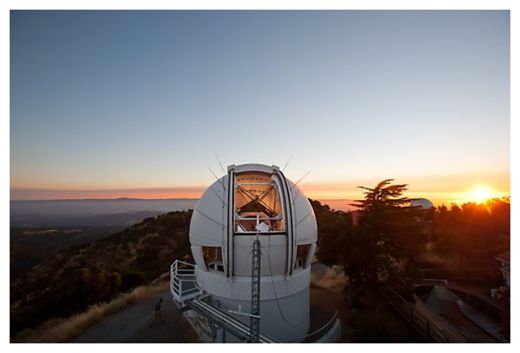
© John Sebastian Russo / The Chronicle 2010
The
Lick Observatory in San Jose, with the Fremont Peak Observatory and a
ground site in San Joaquin County's Lodi, monitors the sky for
meteoroids.
The
Lick Observatory in San Jose, with the Fremont Peak Observatory and a
ground site in San Joaquin County's Lodi, monitors the sky for
meteoroids.
A stream of dusty fragments from a comet born in the outermost
reaches of the solar system has hit the Earth on a path that leads
astronomers to conclude the comet itself could be "potentially
hazardous" if it crashes into the planet.
The comet's location is unknown, making it difficult to say when it will
approach Earth, but "the orbits of the dust trail tells us that the
comet is on a path that could eventually hit us," said Peter Jenniskens,
an astronomer at the SETI Institute and the NASA Ames Research Center
in Mountain View.
"It's very unlikely," he conceded Wednesday. "Such impacts are extremely rare in Earth's history."
The trail of dust grains, known as meteoroids, were shed by the comet
long ago as it passed the sun and Earth on a long orbit that could have
taken thousands of years to complete, Jenniskens said.
The comet was born billions of years ago and trillions of miles away in
the cold comet nursery called the Oort Cloud, and streams of the comet's
dusty progeny have returned to Earth once or twice every 60 years or so
when their orbits come under the influence of Saturn and Jupiter,
Jenniskens said.
Eyes on the sky
Sixty specialized cameras that operate at UC's Lick Observatory, the
Fremont Peak Observatory and a ground-based site, formerly in Mountain
View but now in Lodi under a project called Cameras for Allsky Meteor
Surveillance, constantly monitor the night sky for meteoroids.
Jenniskens said he was scanning the orbits of the dust stream's
fragments from images snapped at Fremont Peak and in Mountain View on
Feb. 4 when he noted a tightly linked cluster of six objects streaming
at nearly 80,000 mph in a shower seven hours long.
"I couldn't believe my eyes at first," he said. But once he had had
determined the identical orbits of the fragments he teamed with Finnish
astronomer Esko Lyytinen to predict that the dust trail will return in
2016, again in 2023, and once again in 2076.
Cold, crowded place
The Oort Cloud where the comet was born billions of year ago is known as
the deeply cold birthplace of all the long-period comets that watchers
on Earth can rarely see because they take as long as 10,000 years to
orbit the sun.
The cloud lies at the outer edge of the sun's influence and may hold as
many as a trillion or more icy bodies, all waiting to be turned into
comets by the gravity tug of some unknown wandering star or by some
other unknown cosmic object.
The dusty comet trail discovered by Jenniskens and his Fremont Peak
colleagues appears to come from the direction of the yellow giant star
called Eta Draconis in the constellation Draco, and the International
Astronomical Union has named the new-found stream of fragments the
"February Eta Draconids."
Jenniskens' scientific report will be published by the Journal of the International Meteor Organizations. Its title is: "Discovery of the February Eta Draconids: the dust trail of a potentially hazardous long-period comet."
Astronomical Events Coming Your Way
We
can't make any promises about your wishes coming true, but we can help
you point them in the right direction. Some beautiful stars, planets,
and asteroids are going to be visible this year and your family can, at
the very least, learn a little bit about astronomy while enjoying the
night sky.
Below is a list of some astronomical events for the remainder of 2011. If you are a star gazing novice, SkyMaps.com offers a monthly "sky map" that can help you know where to look.
July 28, 29 - Southern Delta Aquarids
Meteor Shower. The Delta Aquarids can produce about 20 meteors per hour
at their peak. The shower usually peaks on July 28 & 29, but some
meteors can also be seen from July 18 - August 18. The radiant point for
this shower will be in the constellation Aquarius. This year the thin,
crescent moon will be hanging around for the show, but it shouldn't
cause too many problems. Best viewing is usually to the east after
midnight from a dark location.
July 30 - New Moon. The moon will be
directly between the Earth and the Sun and will not be visible from
Earth. This phase occurs at 18:40 UTC.
August 12, 13 - Perseids Meteor
Shower. The Perseids is one of the best meteor showers to observe,
producing up to 60 meteors per hour at their peak. The shower's peak
usually occurs on August 13 & 14, but you may be able to see some
meteors any time from July 23 - August 22. The radiant point for this
shower will be in the constellation Perseus. The full moon will
definitely be a problem this year, hiding the fainter meteors with its
glare. But with up to 60 meteors per hour possible, it could still be a
great show. Find a location far from city lights and look to the
northeast after midnight.
August 13 - Full Moon. The moon will be
directly opposite the Earth from the Sun and will be fully illuminated
as seen from Earth. This phase occurs at 18:57 UTC. This full moon was
known by early Native American tribes as the Full Sturgeon Moon because
the large sturgeon fish of the Great Lakes and other major lakes were
more easily caught at this time of year. This moon has also been known
as the Green Corn Moon and the Grain Moon.
August 16 - Comet
45P/Honda-Mrkos-Pajdusakova. The comet will pass 0.06 AU (according to
KidsAstronomy.com, an Astronomical Unit is the distance from the earth
to the sun) from Earth and may break naked eye visibility at > +6
magnitude.
August 22 - Neptune at Opposition. The
blue planet will be at its closest approach to Earth and its face will
be fully illuminated by the Sun. This is the best time to view Neptune.
Due to its distance, it will only appear as a tiny blue dot in all but
the most powerful telescopes.
August 29 - New Moon. The moon will be
directly between the Earth and the Sun and will not be visible from
Earth. This phase occurs at 03:04 UTC.
September 3: Mercury reaches its best morning elongation of the year, at 18° west.
September 12 - Full Moon. The moon will be
directly opposite the Earth from the Sun and will be fully illuminated
as seen from Earth. This phase occurs at 09:27 UTC. This full moon was
known by early Native American tribes as the Full Corn Moon because the
corn is harvested around this time of year. This moon is also known as
the Harvest Moon. The Harvest Moon is the full moon that occurs closest
to the September equinox each year.
September 23 - September or Autumnal
Equinox. The September equinox occurs at 09:05 UTC. The Sun will shine
directly on the equator and there will be nearly equal amounts of day
and night throughout the world. This is also the first day of fall
(autumnal equinox) in the northern hemisphere and the first day of
spring (vernal equinox) in the southern hemisphere.
September 25 - Uranus at Opposition. The
blue-green planet will be at its closest approach to Earth and its face
will be fully illuminated by the Sun. This is the best time to view
Uranus. Due to its distance, it will only appear as a tiny blue-green
dot in all but the most powerful telescopes.
September 27 - New Moon. The moon will be
directly between the Earth and the Sun and will not be visible from
Earth. This phase occurs at 11:09 UTC.
October 8 - Draconids: The Draconids, a
generally lackluster shower, peak on this date. This shower has been
known to produce outbursts approaching a ZHR of +600, as happened in
1998. There is some talk that we may intersect an early 1900's stream
this year, producing another outburst centered on Western Europe.
October 12 - Full Moon. The moon will be
directly opposite the Earth from the Sun and will be fully illuminated
as seen from Earth. This phase occurs at 02:06 UTC. This full moon was
known by early Native American tribes as the Full Hunters Moon because
at this time of year the leaves are falling and the game is fat and
ready to hunt. This will also be the smallest full moon of the year
because it will be near apogee, its farthest point from the Earth.
October 21, 22 - Orionids Meteor Shower.
The Orionids is an average shower producing about 20 meteors per hour at
their peak. This shower usually peaks on the 21st, but it is highly
irregular. A good show could be experienced on any morning from October
20 - 24, and some meteors may be seen any time from October 17 - 25. The
nearly last quarter moon may hide some of the faintest meteors this
year. Best viewing will be to the east after midnight. Be sure to find a
dark location far from city lights.
October 21 - Comet C/2010 Elenin. The
comet will reach its closest to Earth: 0.15 AU. This comet could reach
naked eye visibility and as this goes to press, & 'may' be the
surprise comet of the year.
October 26 - New Moon. The moon will be
directly between the Earth and the Sun and will not be visible from
Earth. This phase occurs at 19:56 UTC.
October 29 - Jupiter at Opposition. The
giant planet will be at its closest approach to Earth and its face will
be fully illuminated by the Sun. This is the best time to view and
photograph Jupiter and its moons. The giant planet will be a big and
bright as it gets in the night sky. A medium-sized telescope should be
able to show you some of the details in Jupiter's cloud bands. A good
pair of binoculars should allow you to see Jupiter's four largest moons,
appearing as bright dots on either side of the planet.
November 1- Comet 2009 P1 Garradd. The comet may approach naked eye visibility and put on a show for the last half of 2011.
November 8 - Asteroid 2005 YU55 Flyby. An
asteroid known as 2005 YU55 will make a close approach to the Earth. The
large space rock, about 1,300 feet in diameter will pass closer than
the Moon at 0.85 lunar distances. While it is not expected to pose a
threat to the Earth, this extremely rare event presents a unique
opportunity for amateur astronomers to observe the asteroid as it makes
it closest approach to our planet. Many astronomy groups are planning to
observe the event. Asteroids this large only pass close to the Earth
about every 30 years.
November 10 - Full Moon. The moon will be
directly opposite the Earth from the Sun and will be fully illuminated
as seen from Earth. This phase occurs at 20:16 UTC. This full moon was
known by early Native American tribes as the Full Beaver Moon because
this was the time of year to set the beaver traps before the swamps and
rivers froze. It has also been known as the Frosty Moon.
November 17, 18 - Leonids Meteor Shower.
The Leonids is one of the better meteor showers to observe, producing an
average of 40 meteors per hour at their peak. The shower itself has a
cyclic peak year every 33 years where hundreds of meteors can be seen
each hour. The last of these occurred in 2001. The shower usually peaks
on November 17 & 18, but you may see some meteors from November 13 -
20. The nearly last quarter moon may hide some of the faintest meteors
this year, but this should still be an excellent show. Look for the
shower radiating from the constellation Leo after midnight.
November 25 - New Moon. The moon will be
directly between the Earth and the Sun and will not be visible from
Earth. This phase occurs at 06:10 UTC.
December 10 - Full Moon. The moon will be
directly opposite the Earth from the Sun and will be fully illuminated
as seen from Earth. This phase occurs at 14:36 UTC. This full moon was
known by early Native American tribes as the Full Cold Moon because this
is the time of year when the cold winter air settles in and the nights
become long and dark. This moon has also been known as the Moon Before
Yule and the Full Long Nights Moon.
December 10 - Total Lunar Eclipse. The
eclipse will be visible throughout most of Europe, eastern Africa, Asia,
Australia, the Pacific Ocean, and the North America.
December 13, 14 - Geminids Meteor Shower.
Considered by many to be the best meteor shower in the heavens, the
Geminids are known for producing up to 60 multicolored meteors per hour
at their peak. The peak of the shower usually occurs around December 13
& 14, although some meteors should be visible from December 6 - 19.
The radiant point for this shower will be in the constellation Gemini.
The gibbous moon will definitely interfere this year by hiding the
faintest meteors, but with up to 60 meteors per hour possible, this
should still be an excellent show. Best viewing is usually to the east
after midnight from a dark location.
December 22 - December Solstice. The
December solstice occurs 05:30 UTC. The South Pole of the earth will be
tilted toward the Sun, which will have reached its northernmost position
in the sky and will be directly over the Tropic of Capricorn at 23.44
degrees south latitude. This is the first day of winter (winter
solstice) in the northern hemisphere and the first day of summer (summer
solstice) in the southern hemisphere.
December 24 - New Moon. The moon will be
directly between the Earth and the Sun and will not be visible from
Earth. This phase occurs at 18:06 UTC.
The above information was found at these websites:
Astronomy Calendar of Celestial Events for Calendar Year 2011
Astronomy Events for 2011
Top Astronomy Events for 2011
Trail of crumbs discovered from potentially hazardous comet

© NASA-Ames
This
+2 magnitude February Eta Draconid was filmed by Peter Jenniskens with
one of the low-light-level video cameras of the Cameras for Allsky
Meteor Surveillance (CAMS) station in Mountain View, California,
February 4, 2011.
This
+2 magnitude February Eta Draconid was filmed by Peter Jenniskens with
one of the low-light-level video cameras of the Cameras for Allsky
Meteor Surveillance (CAMS) station in Mountain View, California,
February 4, 2011.
The February Eta Draconids appear to originate from a long-period comet that passes close to Earth's orbit.
The Central Bureau issued a telegram July 10 for Astronomical Telegrams
of the International Astronomical Union (IAU) announcing that a stream
of dust from a potentially dangerous comet impacted Earth for a few
hours last February 4.
"This particular shower happens only once or twice every 60 years," said
Peter Jenniskens from the Search for Extraterrestrial Intelligence
(SETI) Institute, Mountain View, California. "The stream of dust is
always there, but quite invisible just outside of Earth's orbit. Only
when the planets steer the dust in Earth's path do we get to know it is
there."
Since last October, the SETI Institute has teamed up with Fremont Peak
Observatory in San Juan Batista, California, and UCO/Lick Observatory
just east of San Jose, California, in monitoring the night sky with
low-light video cameras in an effort to map the meteor showers in the
sky over the San Francisco Bay Area. They triangulate the meteor
trajectories and determine their orbits in space.
The IAU keeps score of showers that were claimed to exist in
the past and now has a list of more than 300 showers that need
confirmation. Only 64 showers have been established so far. Jenniskens'
goal is to establish many more.
While reducing the Fremont Peak and Mountain View station observations
from February 4, Jenniskens discovered a handful of meteoroids that
arrived at Earth from the exact same direction in the sky. They came
from the direction of the star Eta Draconis, and the shower is now
recognized by the IAU as the February Eta Draconids. This was the first
new shower discovered in the Cameras for Allsky Meteor Surveillance
(CAMS) project.
The meteoroids in question were moving on an elongated orbit, typical of
that of long-period comets such as Hale-Bopp. Unlike Hale-Bopp, this
one passes close to Earth's orbit. Long-period comets rarely come back
to the Sun, and if any one is on a trajectory to hit Earth, we could have little warning.
Now, Jenniskens has found the trail of crumbs of such a comet, which
passed close to Earth's orbit the last time it was near the Sun. That
could have been only a few hundred years ago, or many thousands. At that
time, the comet released a cloud of dust that is now returning. Some
dust grains return earlier than others, depending on how elongated their
orbit was, and the result is a continuous stream of returning dust
grains. That stream is detected only when it encounters Earth, when the
meteoroids cause a brief 2-hour meteor shower.
"Earth gets hosed typically only once or twice every 60 years by such
streams," said Jenniskens. "Only when Jupiter and Saturn are back at
their original positions do they steer the dust trail in our path. The
trail wags in and out of Earth's path much like the Sun moves around in
response to the motion of these heavy planets."
The February Eta Draconids follow a short list of other such known
showers, which include the November 22 Alpha Monocerotids, which were
last seen in 1995, and the September 1 Aurigids, which created a
spectacular shower in 2007. Jenniskens predicted the return of those
showers.
Now that the February Eta Draconid shower has been discovered,
Jenniskens is confident that a next return can be predicted. He teamed
up with Finnish astronomer Esko Lyytinen to investigate. Lyytinen
calculated a possible return in 2016 or 2023, after that not again until
2076.
Future observations of this shower may bring other information about the
comet that caused this stream of meteoroids, which is a potential
danger to Earth. "If the meteoroids can hit us, so can the comet," said Jenniskens, "We don't know whether the comet has already passed us by or is still on approach."
To get some advance warning, one could look along the measured orbit to
those spots where the comet could arrive at Earth's orbit on a future
February 4 date.
"Even then, chances are very small that the comet will actually hit us,
as such impacts are rare in Earth's history," Jenniskens added.
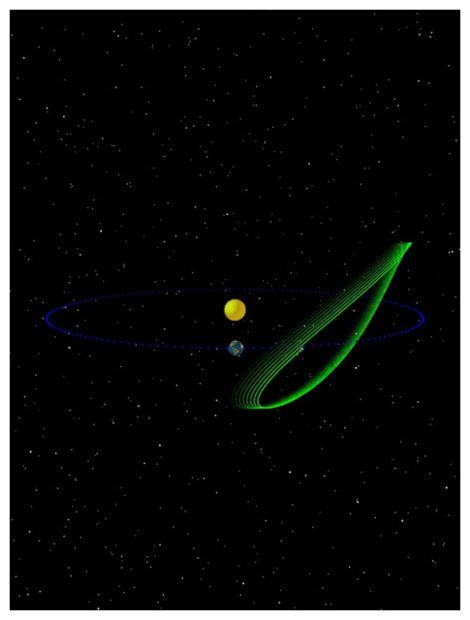
© Paul Wiegert, The University of Western Ontario
This
almost edge-on view of the Earth's orbit and that of the Trojan
asteroid 2010 TK7 shows (in green) the vertical motion of the asteroid
relative to the Earth over the course of several years. The asteroid was
discovered by NASA's WISE telescope and is the first confirmed Trojan
asteroid in Earth's Lagrange points.
This
almost edge-on view of the Earth's orbit and that of the Trojan
asteroid 2010 TK7 shows (in green) the vertical motion of the asteroid
relative to the Earth over the course of several years. The asteroid was
discovered by NASA's WISE telescope and is the first confirmed Trojan
asteroid in Earth's Lagrange points.
The first in a long-sought type of asteroid companion to Earth has
now been discovered, a space rock that always dances in front of the
planet along its orbital path, just beyond its reach.
The asteroid, called 2010 TK7, is nearly 1,000 feet (300 meters) across
and currently leading the Earth by about 50 million miles (80 million
kilometers).
The asteroid is the first in a category known as Earth's Trojans, a
family of space rocks that could potentially be easier to reach than the
moon, even though its member asteroids can be dozens of times more
distant, researchers said. Such asteroids, which have long been
suspected but not confirmed until now, could one day be valuable destinations for missions, especially loaded as they might be with elements rare on Earth's surface, they added.
To imagine where Trojan asteroids
are, picture the sun and Earth as being two points in a triangle whose
sides are equal in length. The other point of such a triangle is known
as a Trojan point, or a Lagrangian point after the mathematician who
discovered them. The sun and Earth have two such points, one leading
ahead of Earth, known as its L-4 point, and one trailing behind, its L-5
point.
The sun and other planets have Lagrangian points as well, and
asteroids have been seen at those the sun shares with Jupiter, Neptune
and Mars. Scientists had long suspected the sun and Earth had Trojans as
well, but these companions would dwell mostly in the daytime sky as
seen from Earth, making them largely hidden in the sunlight.
Now, with the aid of the Wide-field Infrared Survey Explorer
(WISE) satellite launched in 2009, astronomers have discovered Earth's
first probable Trojan, a rock that spends its time at the sun-Earth L-4
point.
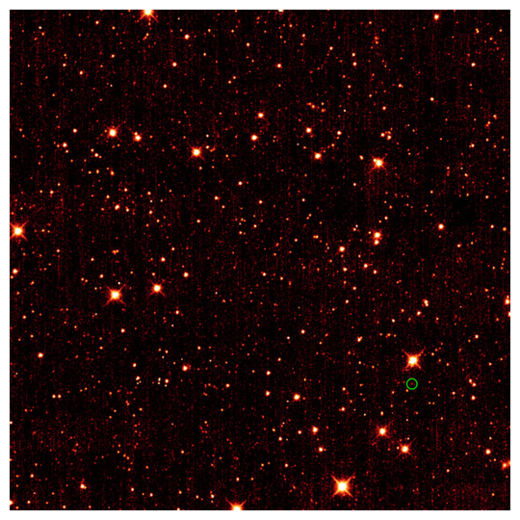
© NASA
NASA's
WISE satellite has spotted Earth's first Trojan asteroid. The object,
asteroid 2010 TK7, orbits ahead about 50 million miles ahead of Earth in
the planet's orbit and is about 1,000 feet wide.
NASA's
WISE satellite has spotted Earth's first Trojan asteroid. The object,
asteroid 2010 TK7, orbits ahead about 50 million miles ahead of Earth in
the planet's orbit and is about 1,000 feet wide.
Earth's first Trojan asteroid
Asteroid 2010 TK7 has a bizarre, chaotic orbit.
Trojan asteroids typically do not orbit right at the Lagrangian points
but in tadpole-shaped loops around them, due to the gravitational
attraction of other bodies in the solar system. However, 2010 TK7's
tadpole orbit is unusually large, at times taking it nearly as far as
the opposite side of the sun from the Earth.
"This one has behavior much more interesting than I thought we would
find," study co-author Martin Connors, an astronomer at Athabasca
University in Canada, told SPACE.com. "It seems to do things not seen
for Trojans before. Still, it had to have some kind of extreme behavior
to move it far enough from its Lagrangian point to get within our view."
Connors and his team began their search for an Earth Trojan using data
from WISE's asteroid- and comet-hunting project, called NEOWISE, named
after Near-Earth Objects and WISE.
The WISE telescope scanned the whole sky in infrared light from January
2010 to February 2011, a hunt that resulted in two candidates, one of
which, 2010 TK7, was confirmed to be an Earth Trojan after follow-up
observations at the Canada-France-Hawaii Telescope on Mauna Kea, Hawaii.
The researchers have calculated the asteroid's orbit well enough to
understand where it will be over the next 10,000 years - 2010 TK7 will
not approach Earth any closer than 12.4 million miles (20 million
kilometers), which is more than 50 times the distance from Earth to the
moon.
"It's as though the Earth is playing follow the leader," said Amy
Mainzer, the principal investigator of NEOWISE at NASA's Jet Propulsion
Laboratory, who was not a part of the study. "Earth is always chasing
this asteroid around."
The fact that 2010 TK7's behavior is chaotic enough to take it quite far
from its rather stable Trojan point suggests it is only marginally
trapped there, having perhaps only recently been disturbed from its
original position. The researchers will run more computer models of its
orbit to find out what happened, Connors said.
Asteroid 2010 TK7 may be the first confirmed Earth Trojan asteroid, but
there are several space rocks known to exist in relatively stable orbits
in our planet's neighborhoods. They include asteroids Cruithneand 2010
SO16, which have vast horseshoe-shaped orbits, and at least two others.
But none of these other asteroids have been conformed to be Earth
Trojans.
Still much unknown
So far 2010 TK7 does not have a formal name. "Its orbit needs to be
nailed down before a name is considered, so it'll take a couple of years
more observations before the WISE team can give it one," Connors said.
No color information of it is at yet available of 2010 TK7 to shed light
on its composition. In principle asteroids could have a similar makeup
to Earth's, but since they are smaller they would have cooled down
faster, meaning that heavier substances would not have had time to sink
to their centers as they did on our planet.
As such, elements that are uncommon on Earth's surface might be more accessible on asteroids.
"We could be mining these things one day," Connors said.
Unfortunately, 2010 TK7 is not a good target because it travels above
and below the plane of Earth's orbit, which means it would require large
amounts of propellant to reach. However, if other Earth Trojans do
exist, they could prove more accessible.
Now that the researchers have found one, "it makes you want to wonder if
there are any more," Connors said. He noted hopefully the Panoramic
Survey Telescope and Rapid Response System (Pan-STARRS) array of
telescopes and cameras aimed at detecting near-Earth objects could turn
more up.
The scientists detailed their findings in the July 28 issue of the journal Nature.
Astronomers discovered that the Earth has a Trojan asteroid friend that it does the sun dance with.
Trojans are asteroids that share an orbit with a planet and circles
around the sun in front of or behind the planet. They ride in the same
orbit as a planet and never cross its path or collide with the planet.
Asteroid 2010 TK7 was discovered by NEOWISE, the asteroid-hunting
section of NASA's WISE mission. It was confirmed as the first Earth
Trojan after follow up observations with the Canada-France-Hawaii
Telescope on Mauna Kea in Hawaii, NASA said.
Scientists thought Earth should have Trojans. However, those kinds of
asteroids were hard to find because they are relatively small and appear
near the sun from Earth's point of view, according to NASA.
The new discovery can be read in the July 28 issue of the journal Nature.
"These asteroids dwell mostly in the daylight, making them very hard to
see," said Martin Connors of Athabasca University in Canada, lead author
of a new paper. "But we finally found one, because the object has an
unusual orbit that takes it farther away from the sun than what is
typical for Trojans."
Asteroid 2010 TK7 is about 1,000 feet (300 meters) in diameter, has an
unusual, and is about 50 million miles (80 million kilometers) from
Earth. It has an extreme orbit that takes it far above and below the
plane of Earth's orbit. It has a well-defined orbit and for the next 100
years, won't come closer to Earth than 15 million miles (24 million
kilometers).
Trojan asteroids also share orbits with other planets in our Solar System to include Neptune, Mars and Jupiter.

© Paul Wiegert, University of Western Ontario, Canada
This
artist's concept illustrates the first known Earth Trojan asteroid,
discovered by WISE. The asteroid is gray and its extreme orbit is shown
in green.
This
artist's concept illustrates the first known Earth Trojan asteroid,
discovered by WISE. The asteroid is gray and its extreme orbit is shown
in green.
WISE was able to spot 2010 TK7 because of its unusual orbit that
takes it as far as 90 degrees away from the sun, according to NASA.
According to the space agency, the WISE telescope scanned the entire sky
in infrared light from last January to February this year. The NEOWISE
project has observed more than 155,000 asteroids in the main belt
between Mars and Jupiter, and more than 500 NEOs, discovering 132 that were previously unknown, NASA said.
"It's as though Earth is playing follow the leader," said Amy Mainzer,
the principal investigator of NEOWISE at NASA's Jet Propulsion
Laboratory in Pasadena, Calif. "Earth always is chasing this asteroid
around."
But don't expect NASA to plan a visit to asteroid 2010 TK7 any time soon.
Earth's first Trojan wouldn't be a good target for robotic or human
exploration because it travels too far above and below the plane of
Earth's orbit, and would require large amounts of fuel to reach it.
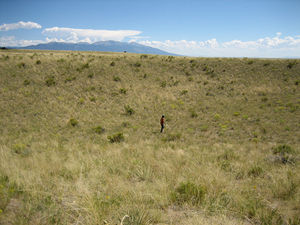
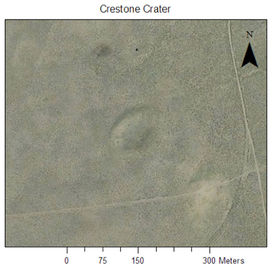
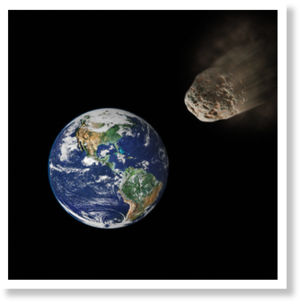
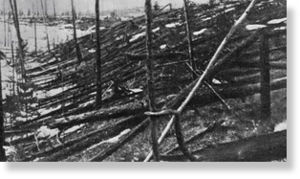
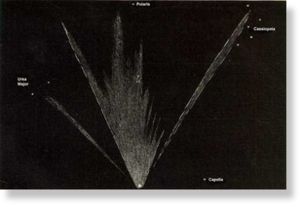
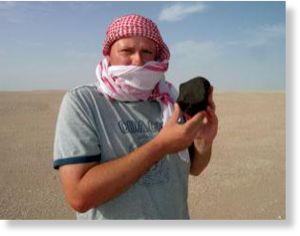



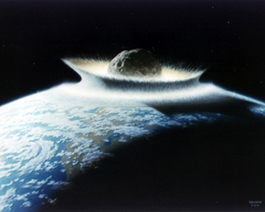

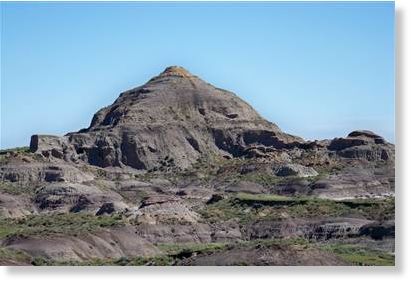
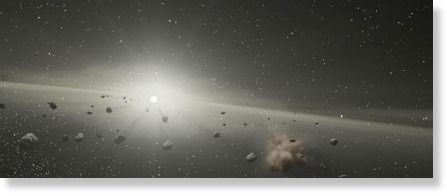

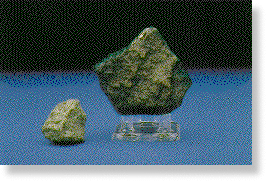
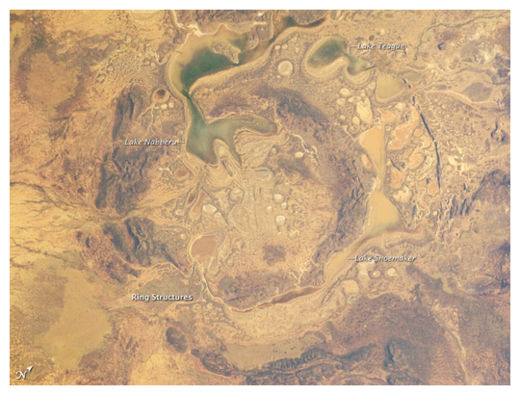


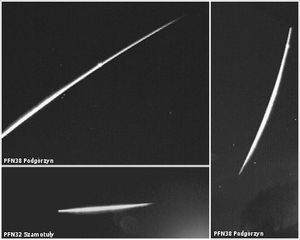
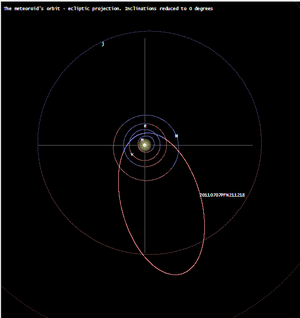
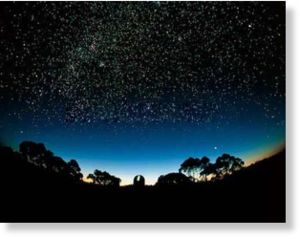
No comments:
Post a Comment